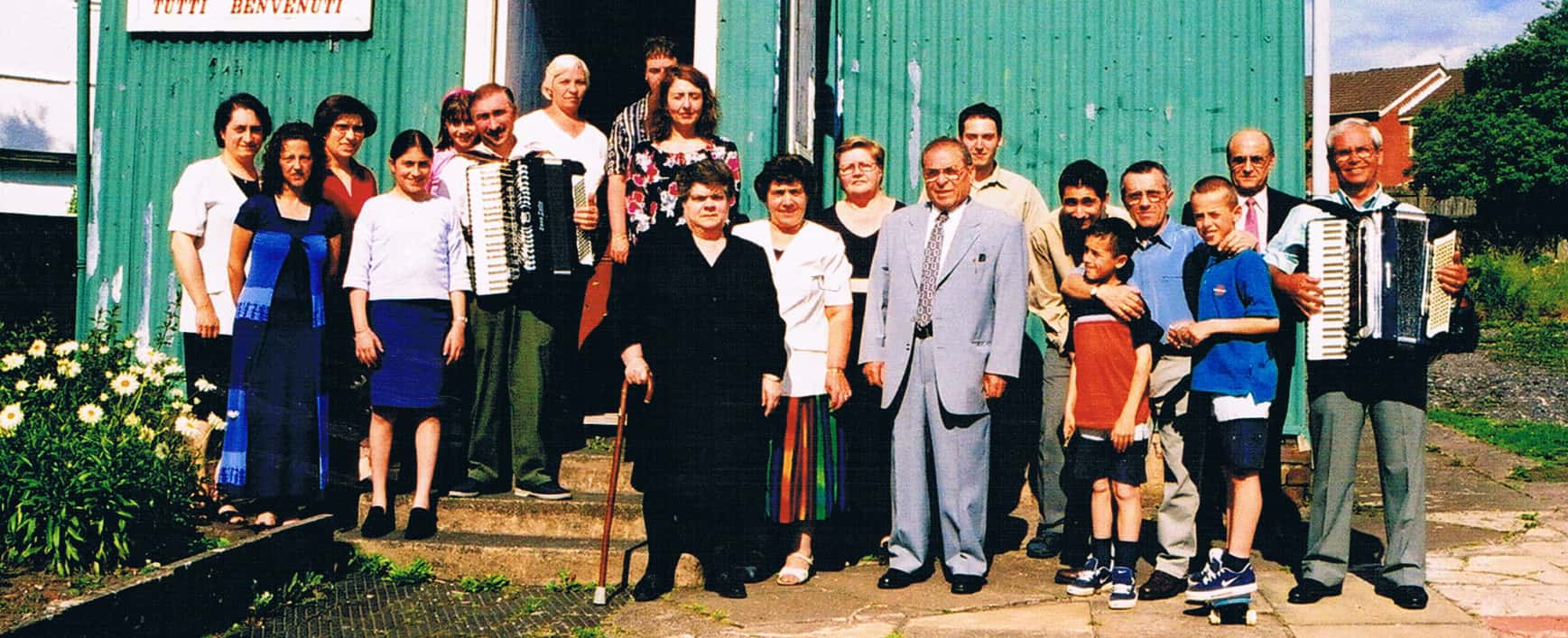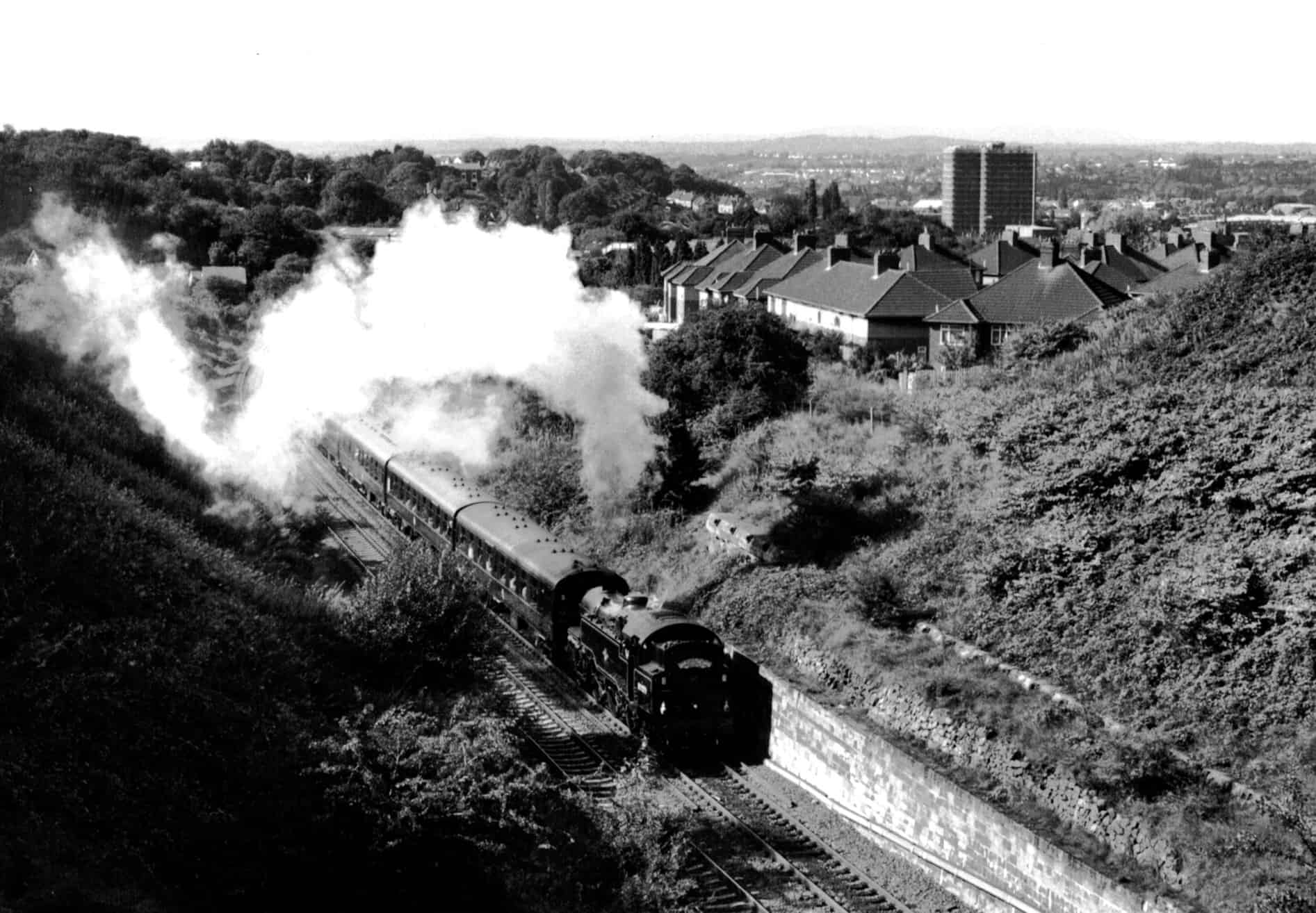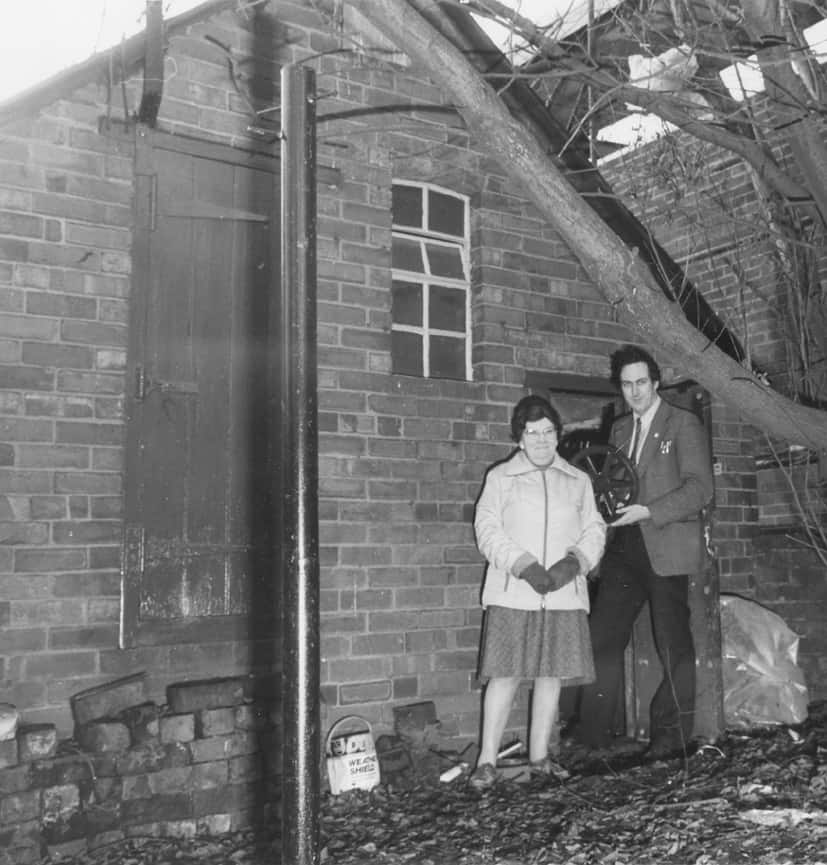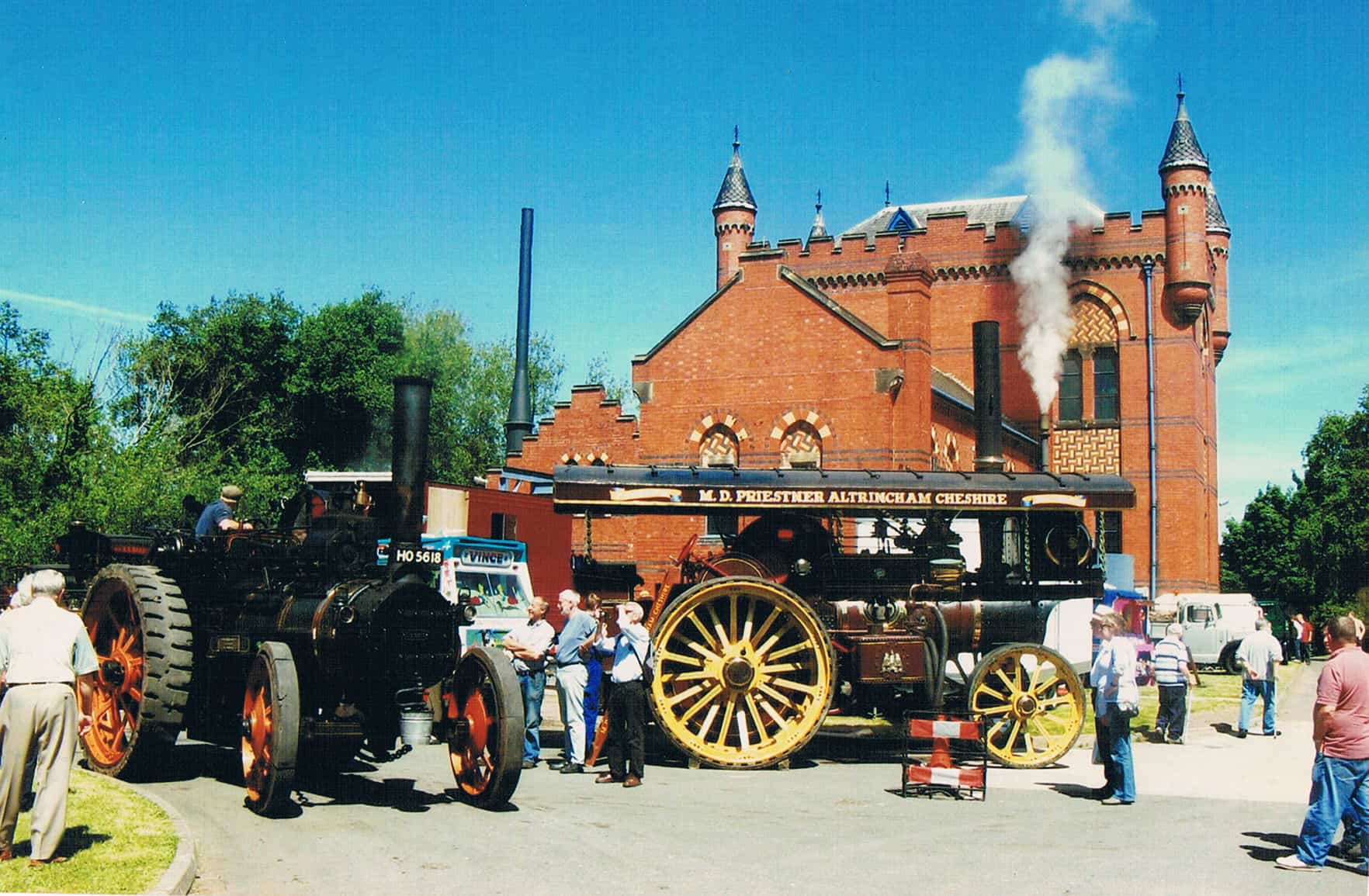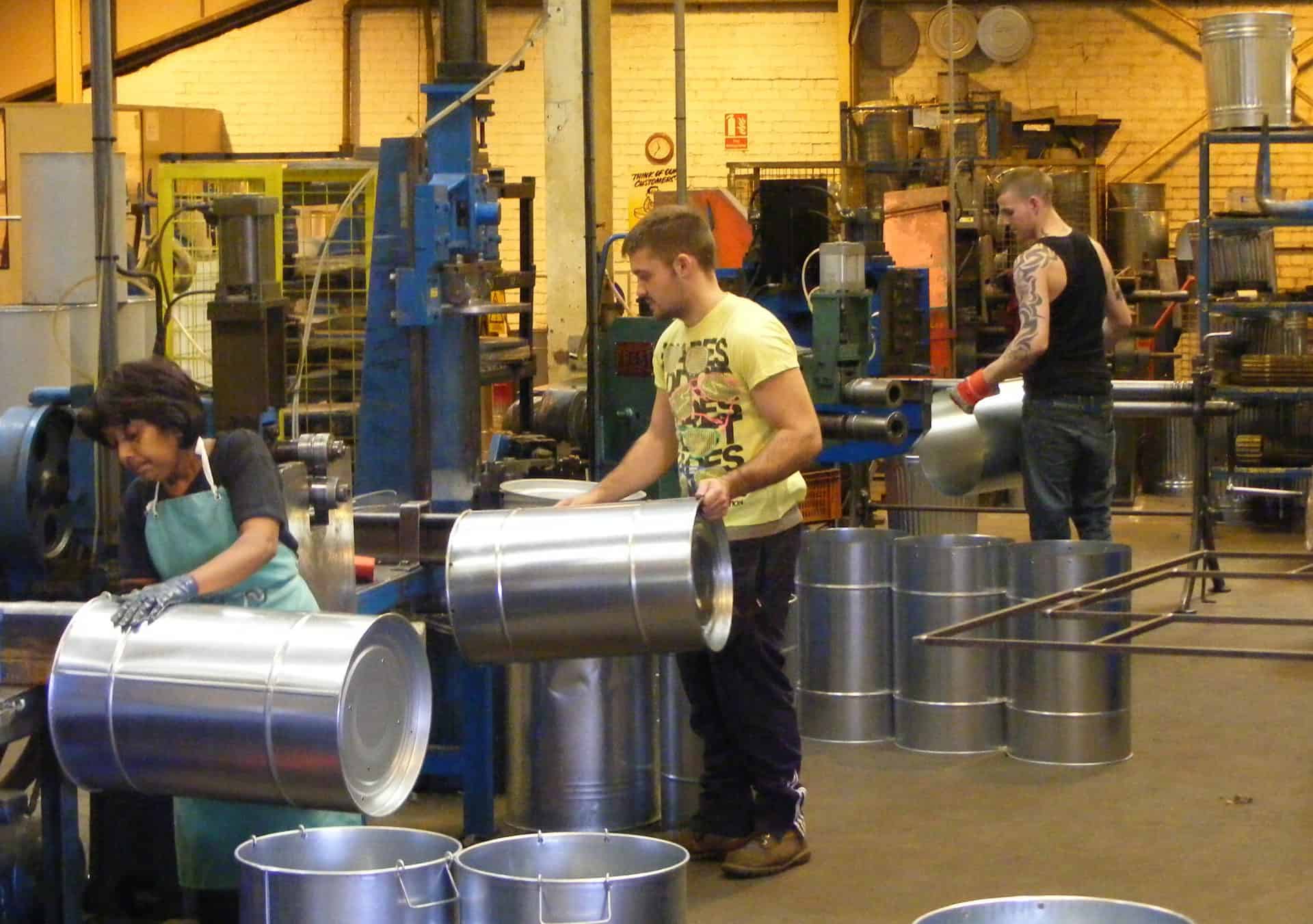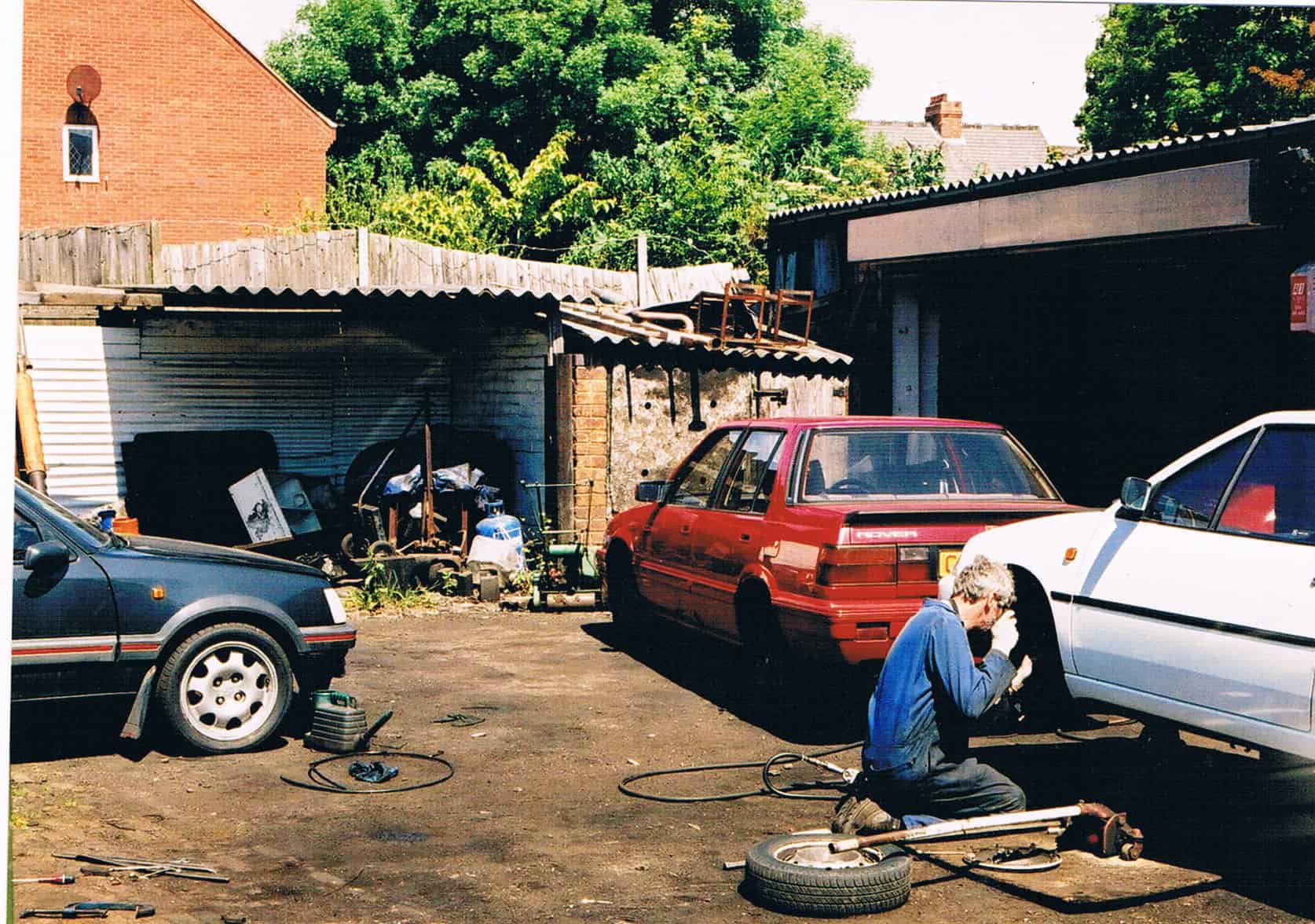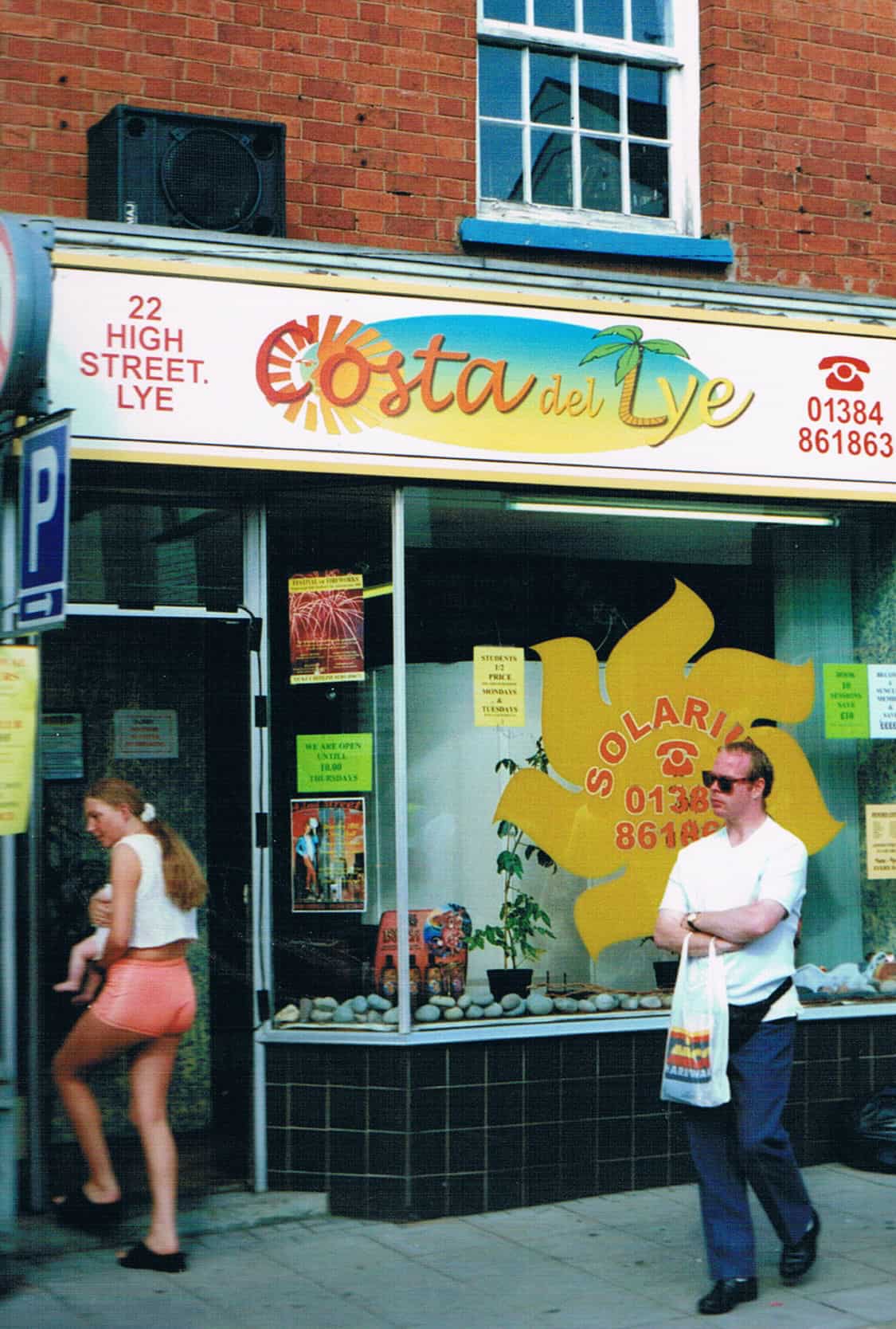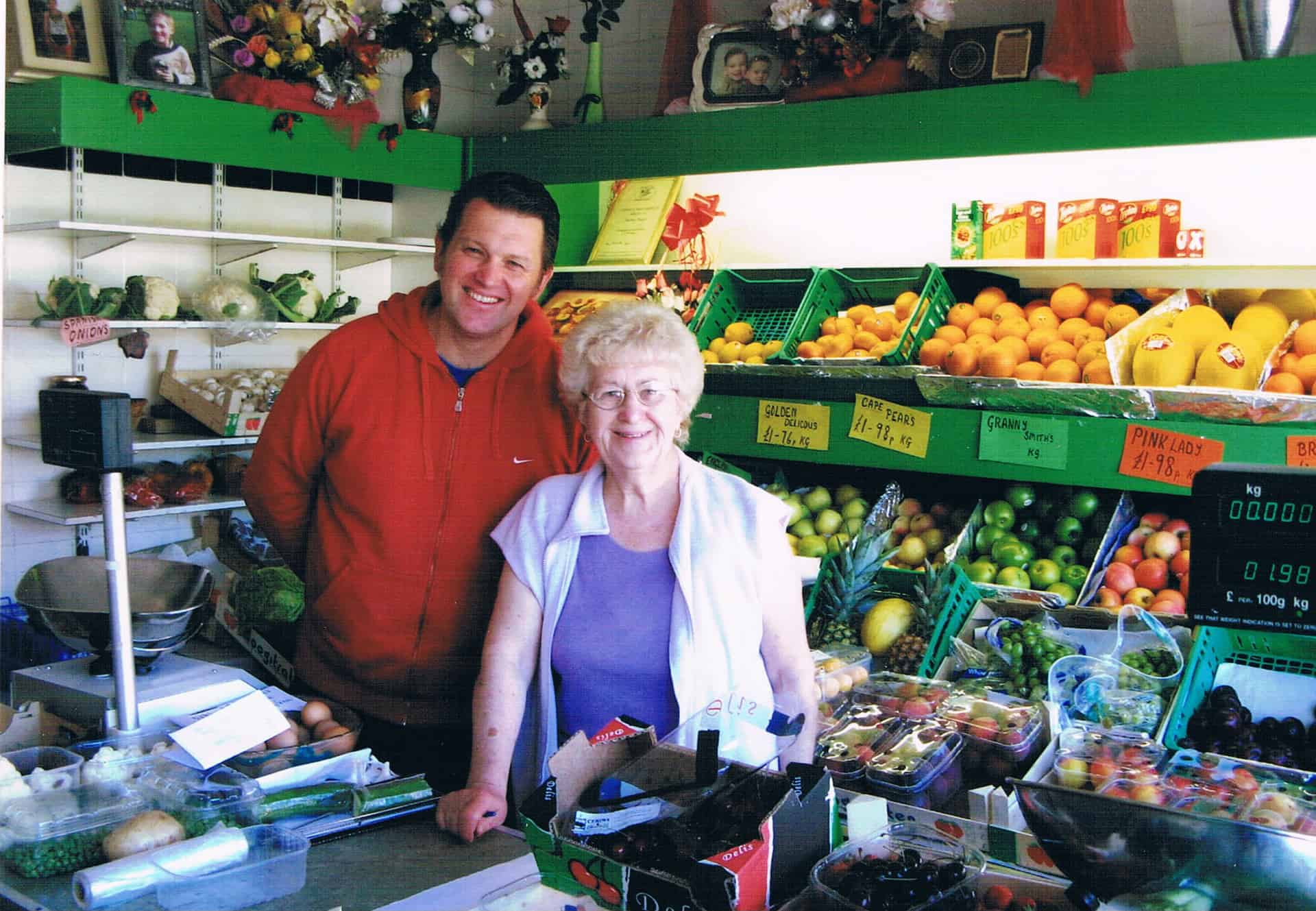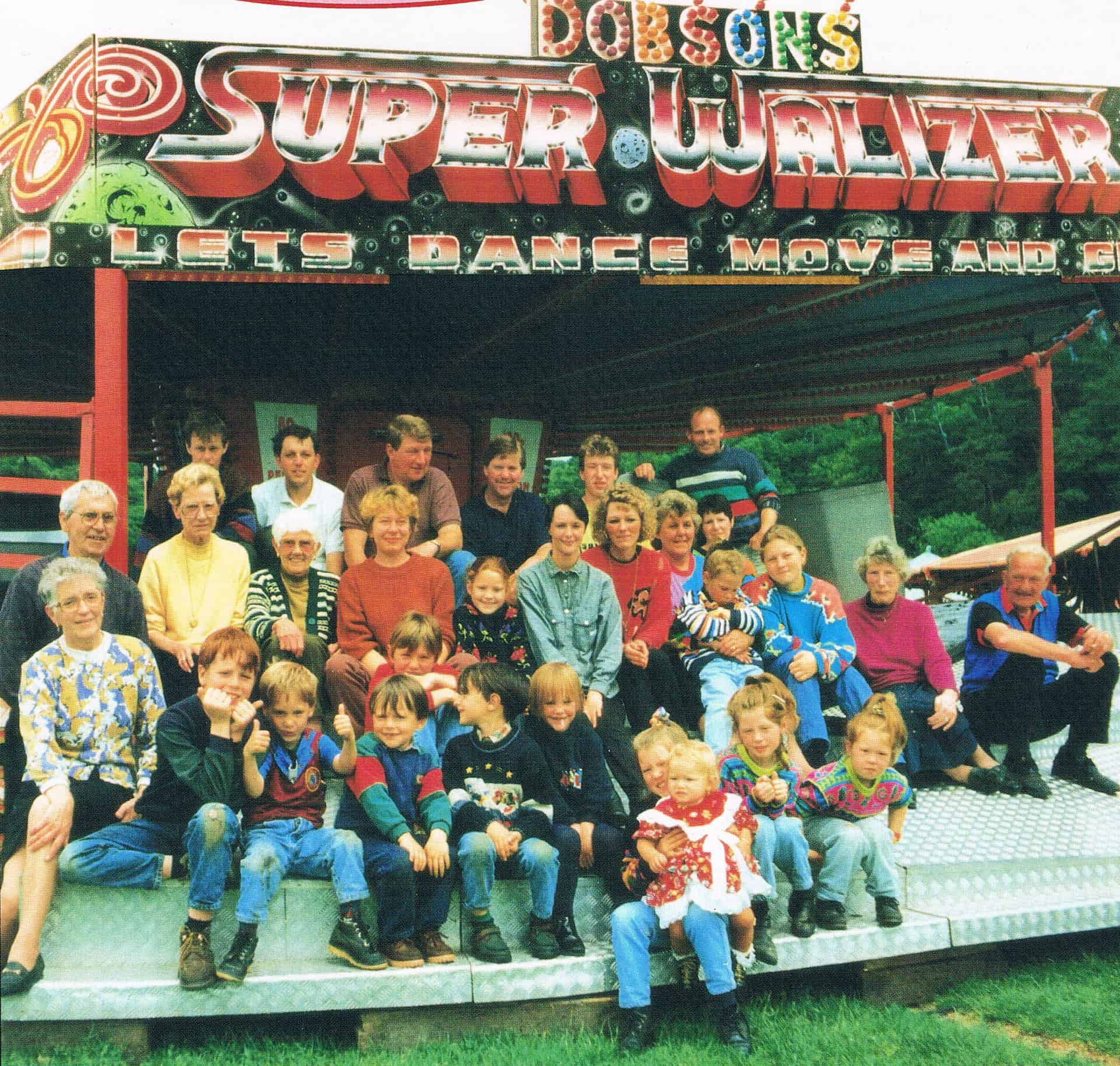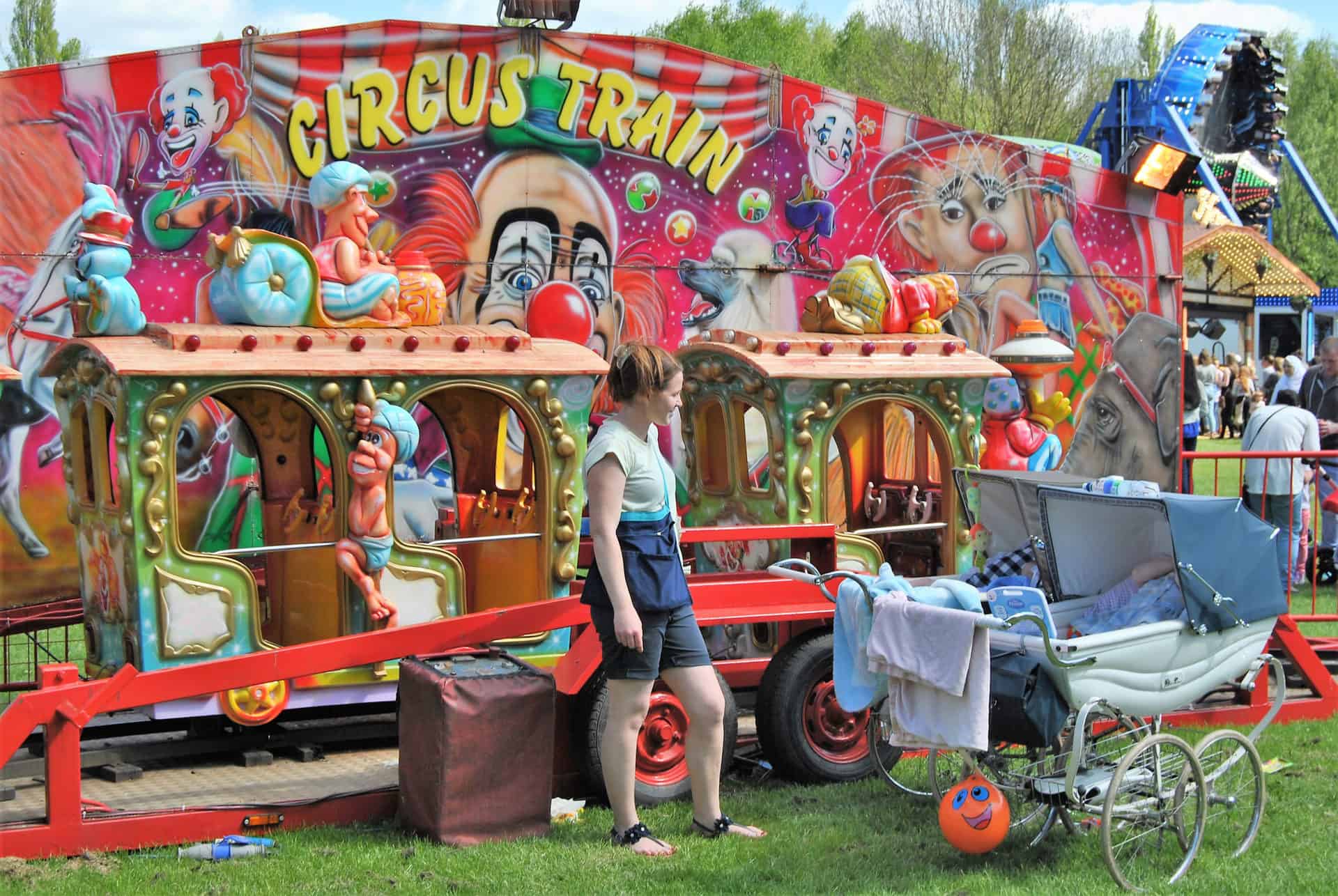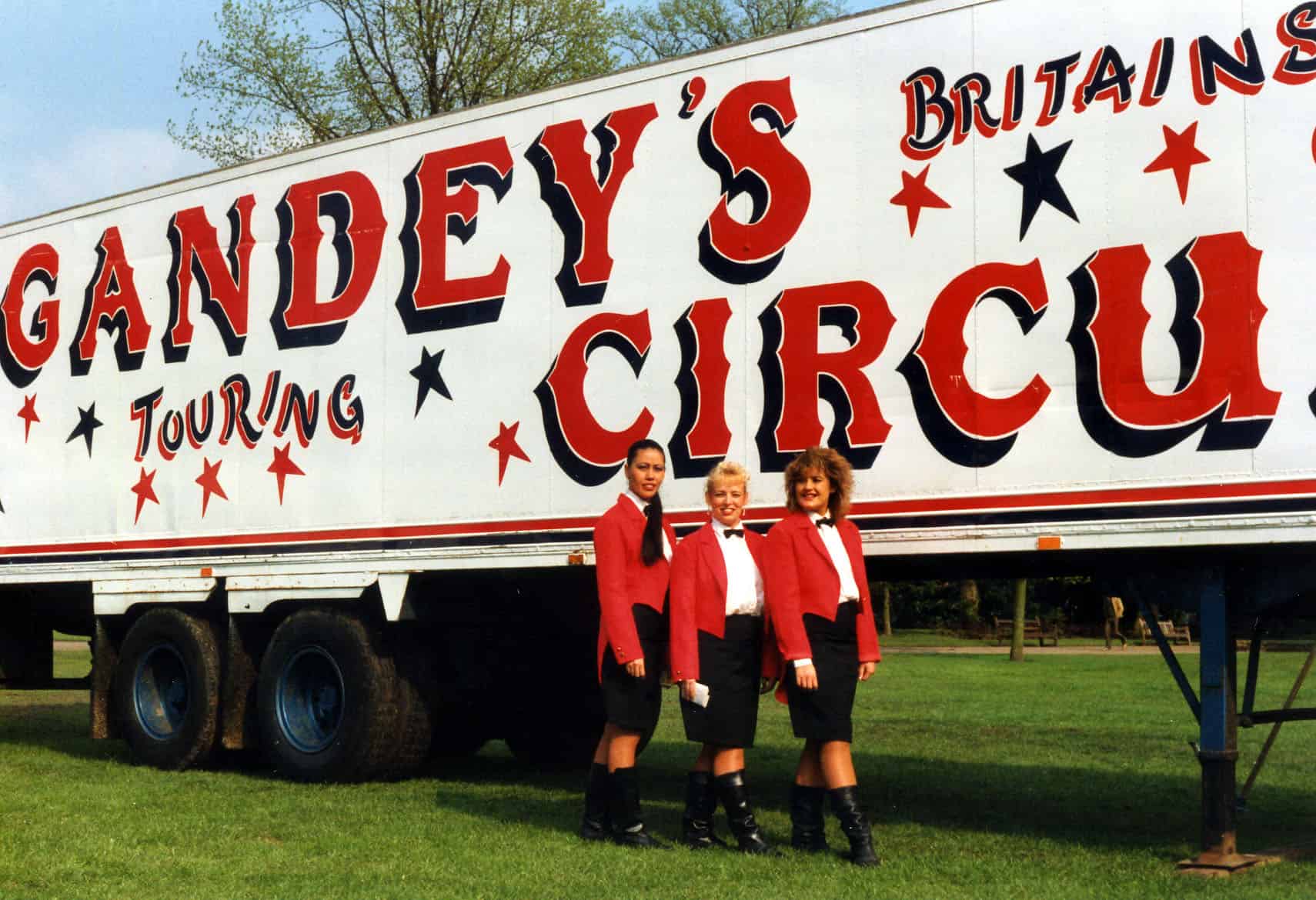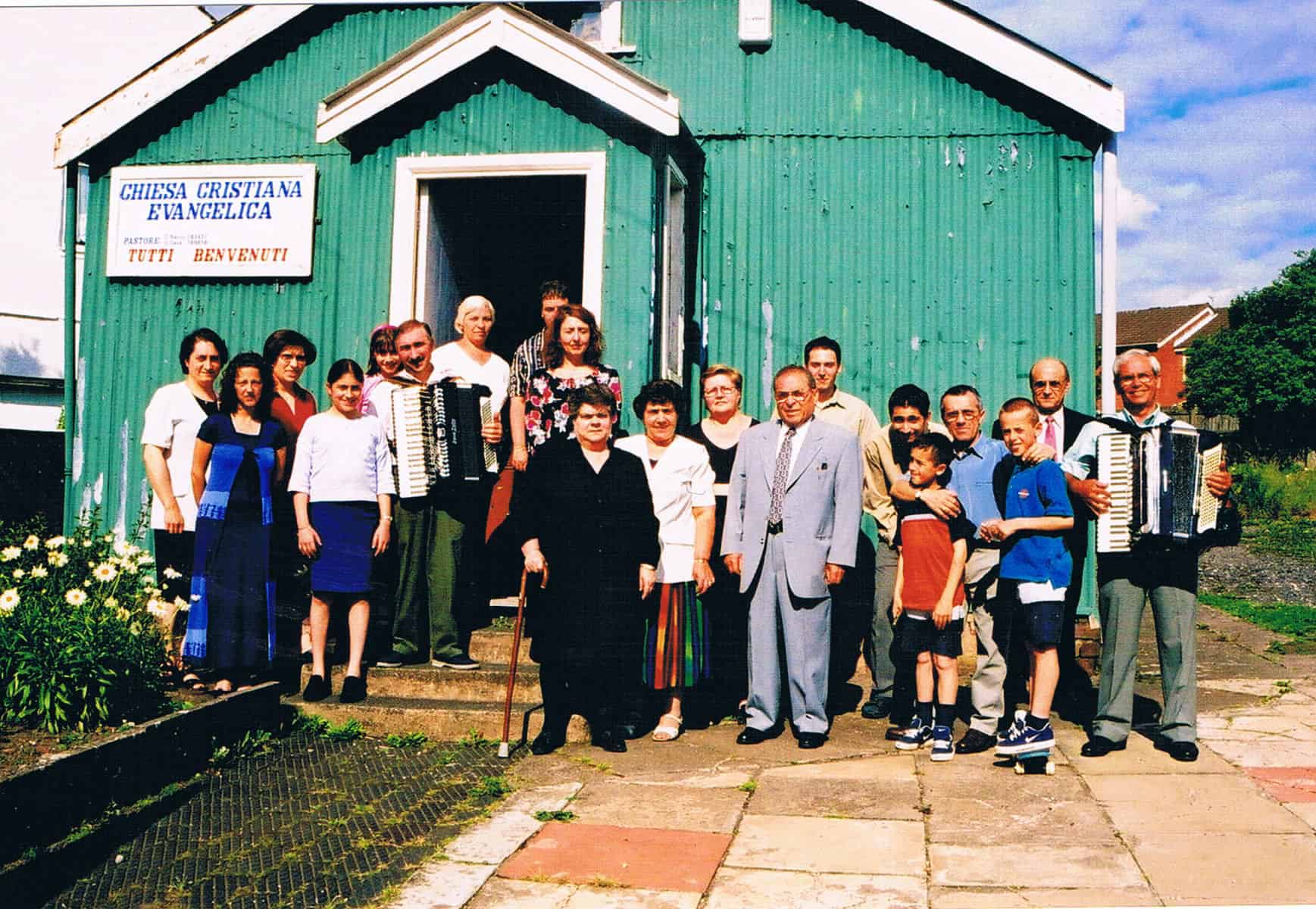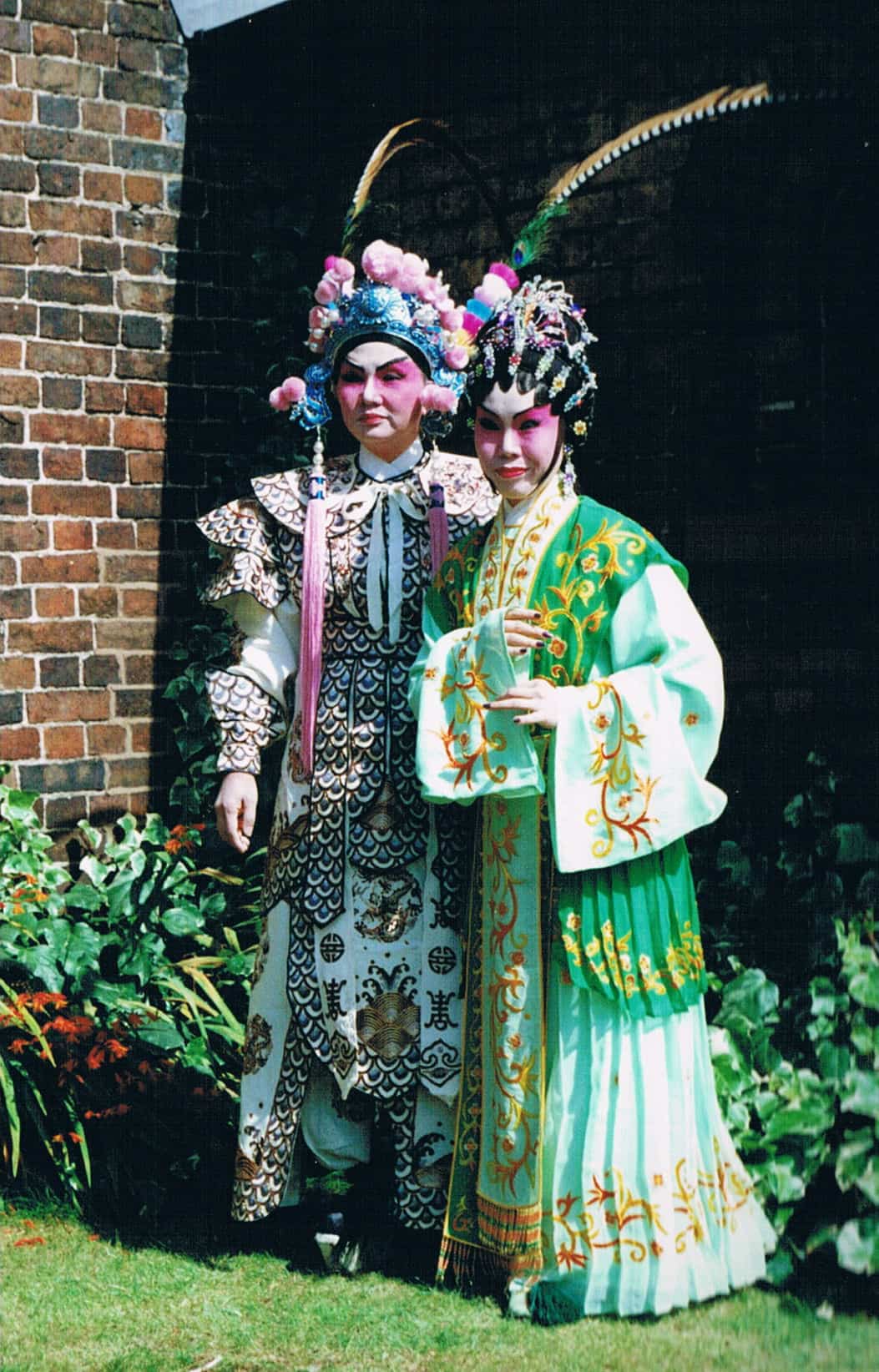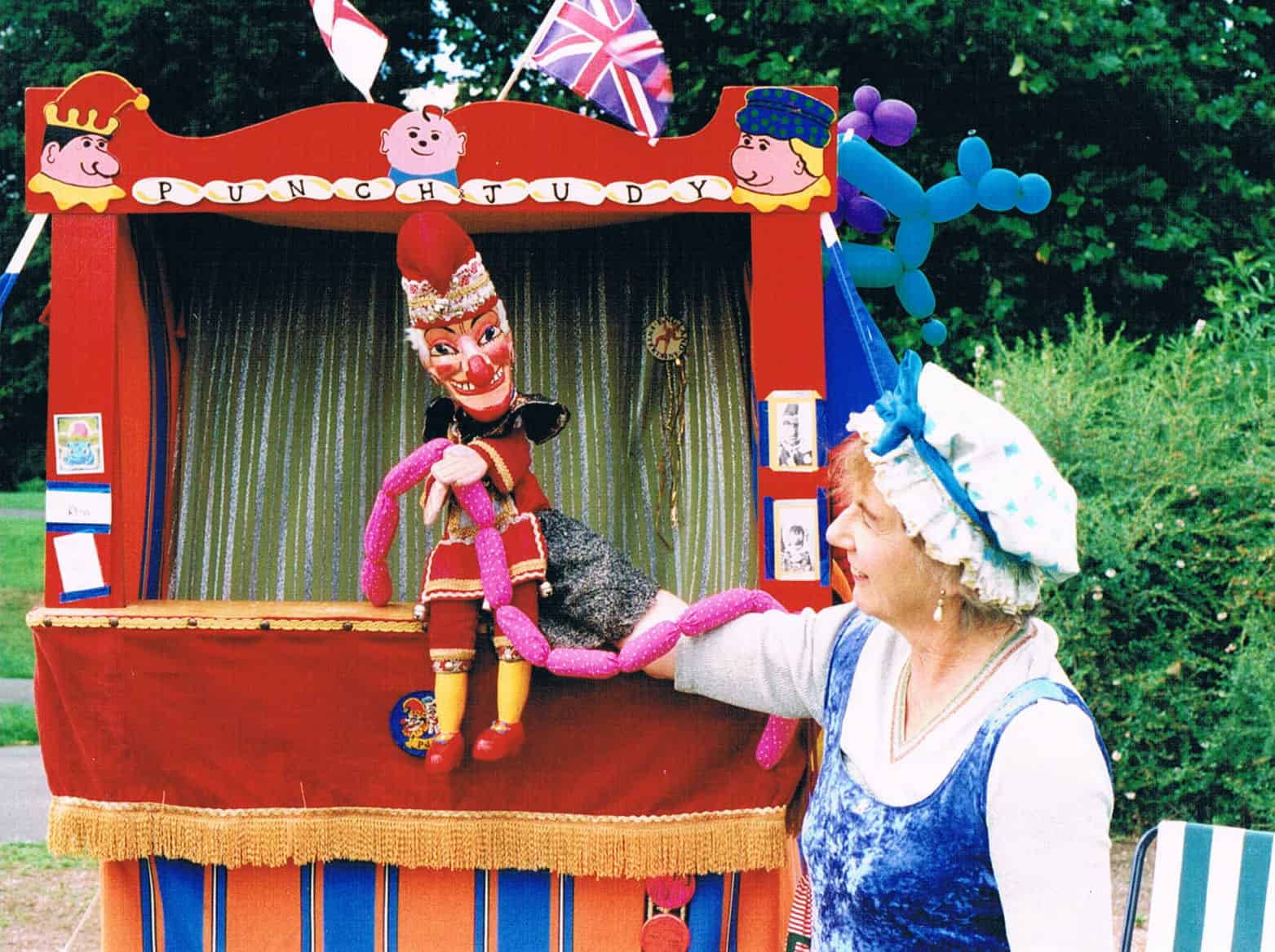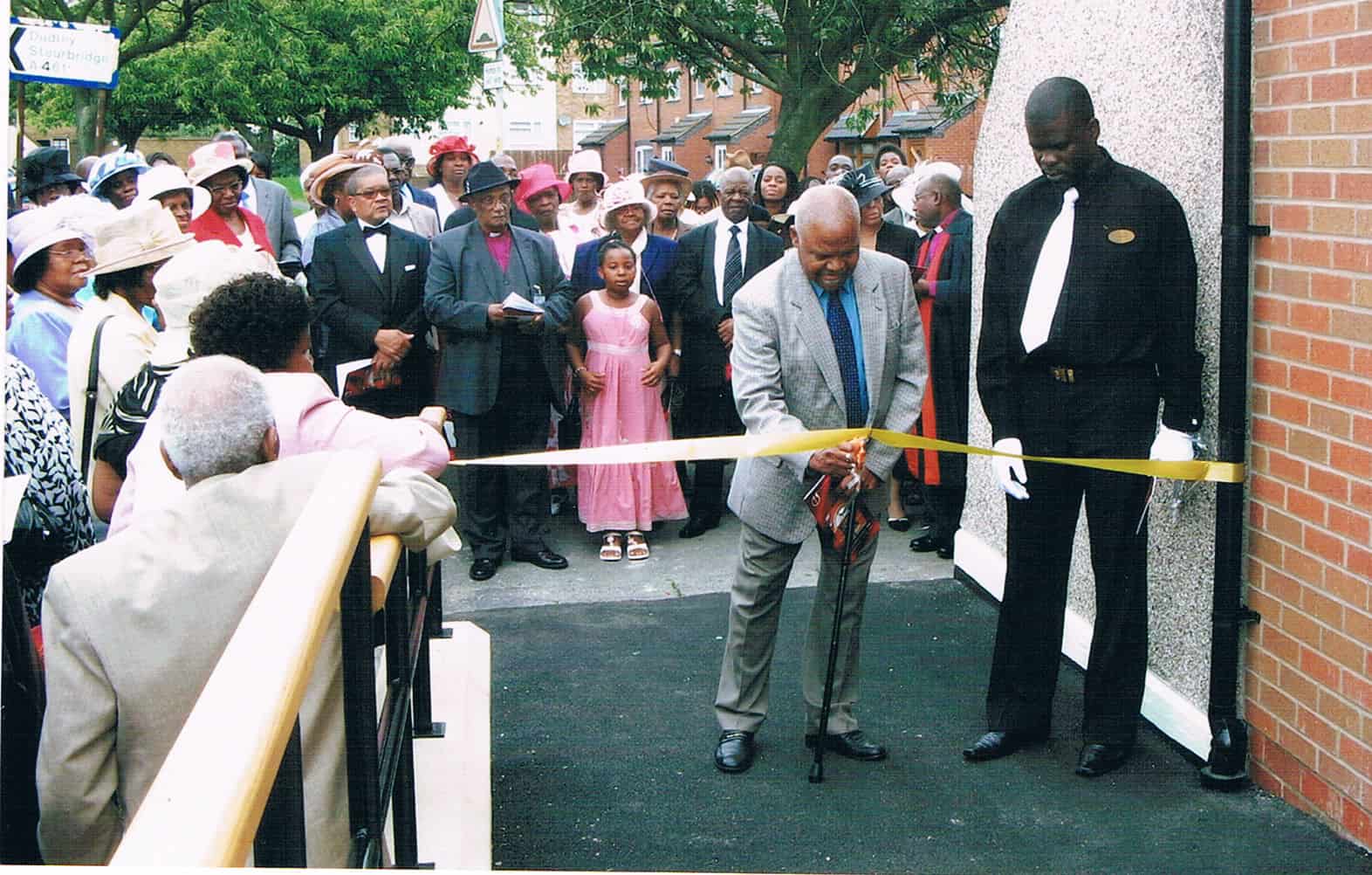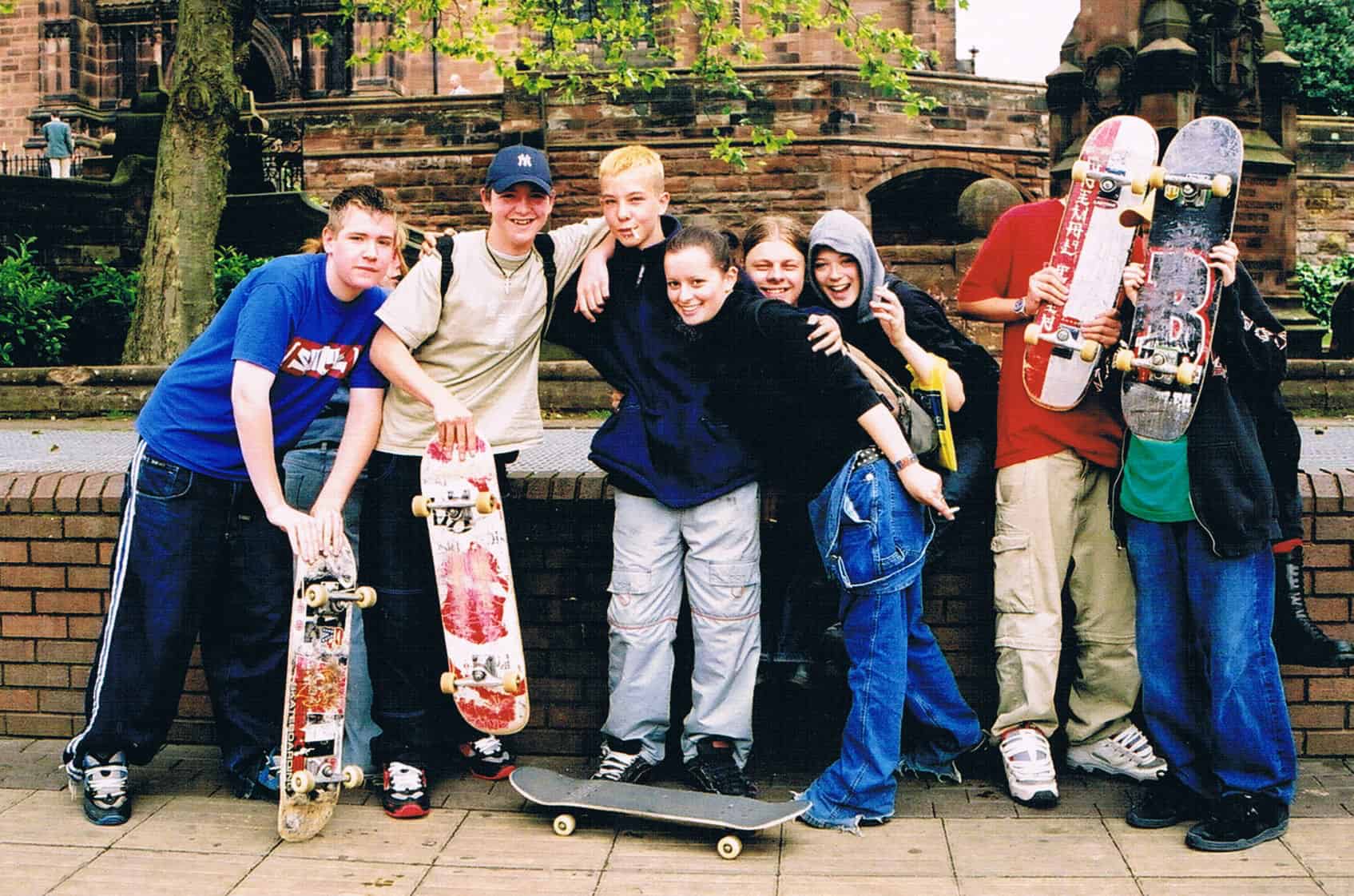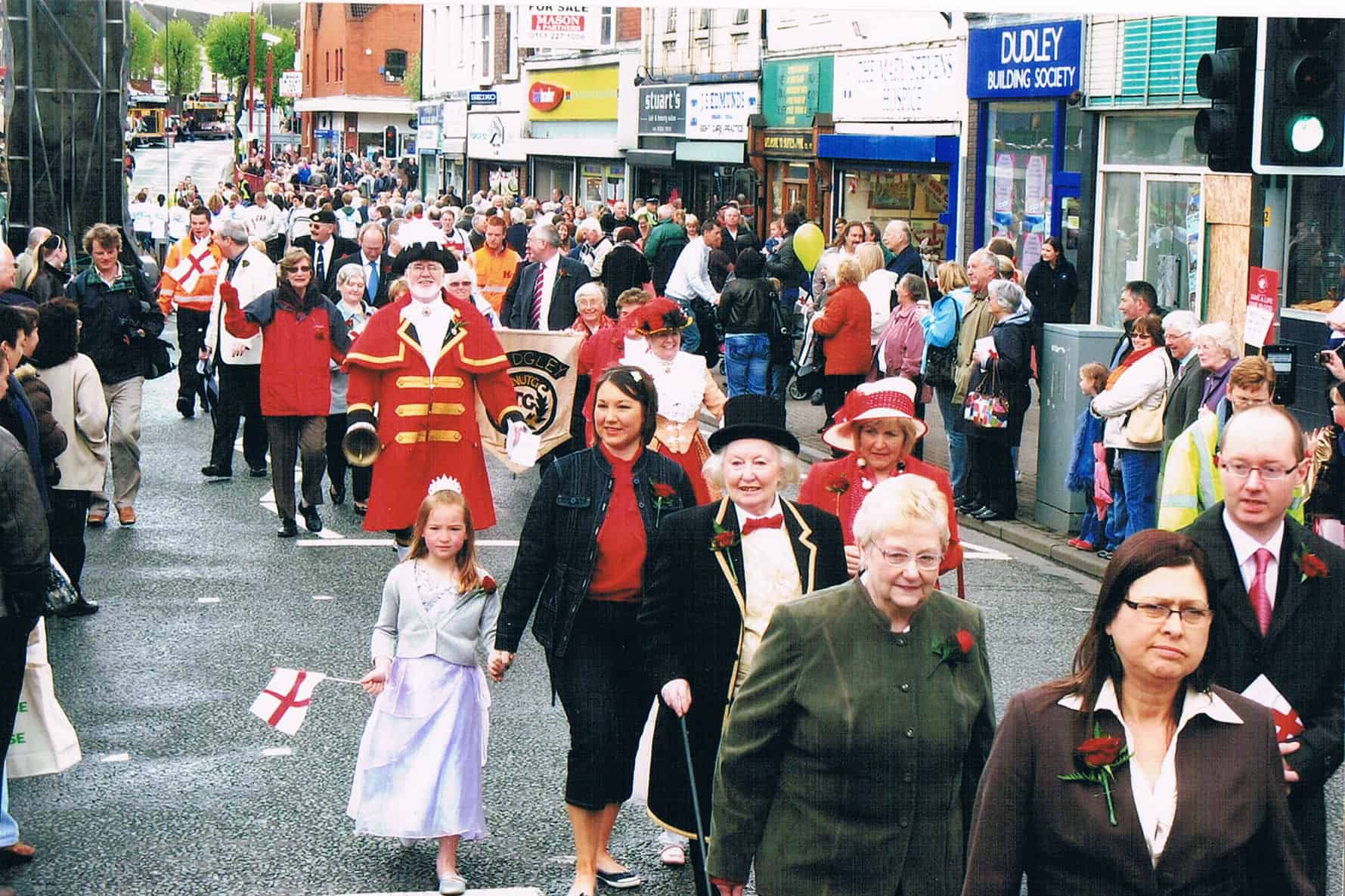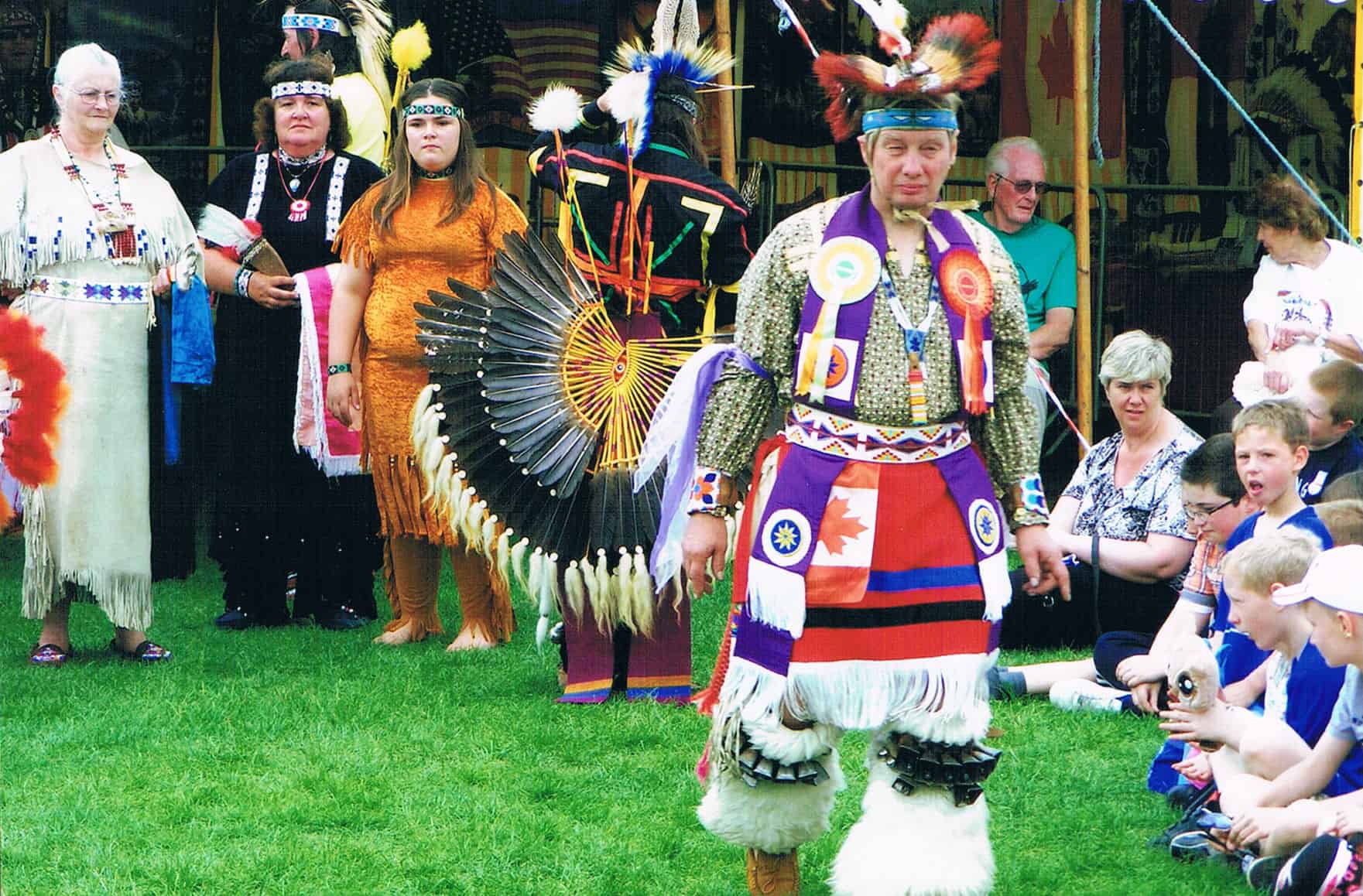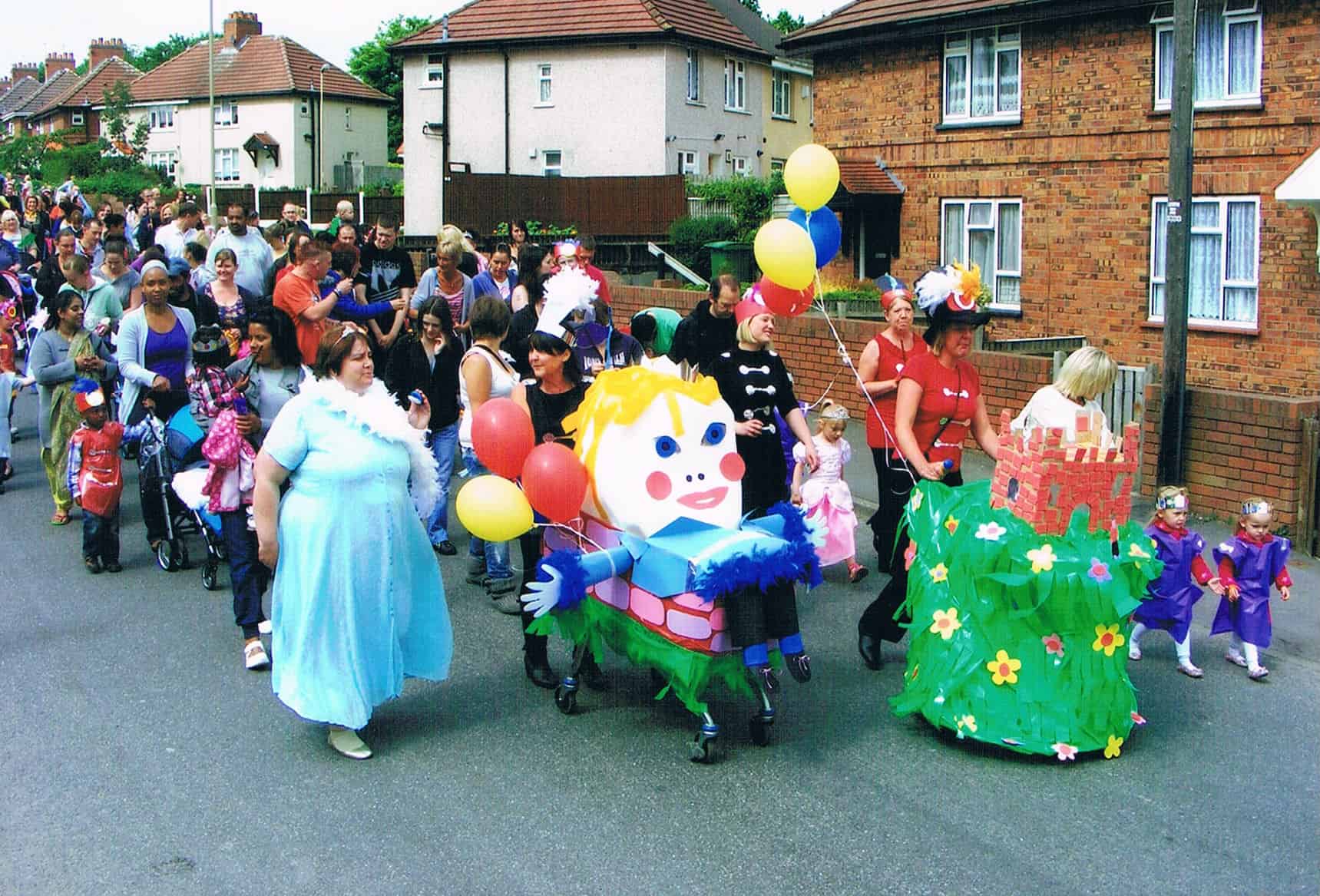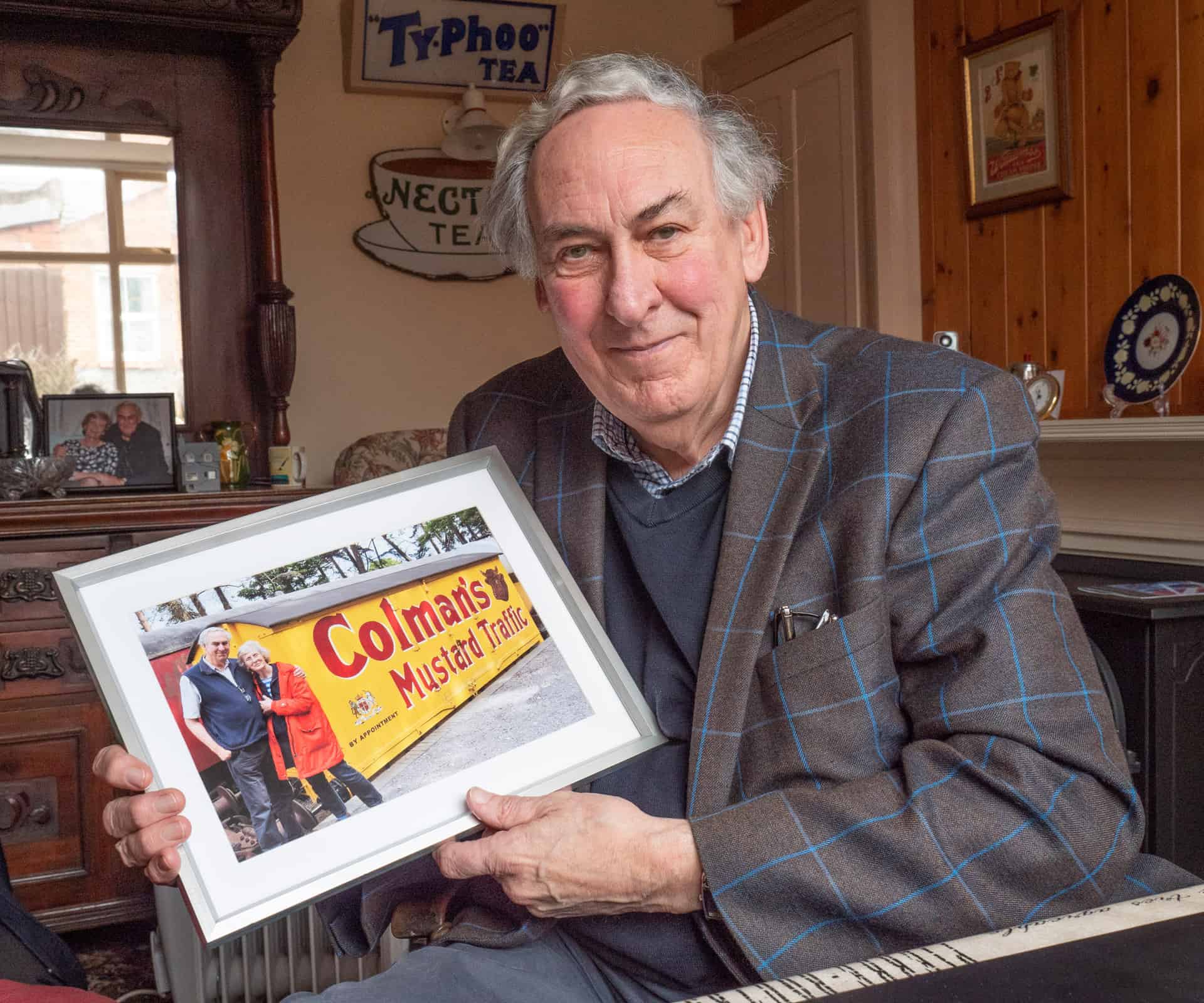Ned Williams
I am a Londoner and was born on the night of the first V-2 raid in London in 1944. I was born in Ilford, which is right on the border of the East End of London and Essex. It's now part of Greater London of course. I moved to the Black Country because at the age of 18 I had absolutely no clue as to what I wanted to do. It would be great to be a film director or a writer or even a journalist, but I couldn't seem to find a way to those sorts of things. Things were a bit limited in 1962 as to what you could do. Now, of course, everybody lives their dreams and gets on with what they want to do, but it was difficult in 1962 and all I knew was I probably wanted to leave home and I wanted to go to somewhere different, like a new planet, and have an adventure.
Purely by coincidence and random selection I happened to come Dudley to go to the teacher training college. Not because I wanted to be a teacher, but because I wanted to go somewhere different and have an adventure. And right from the day I arrived in Dudley; the very first morning I started having adventures. So it was love at first sight really. I thought this is a marvellous place, I'm really going to enjoy being here. And I've never lost the excitement of falling in love with the Black Country. Every day I could just walk out of this house and something would happen fairly quickly, which would be another thing to pursue and more interests to follow.
So the first image here is of a train. I've produced a number of books about railways in the Black Country, trying to put them on the map, trying to share my enthusiasm with people I have discovered who are interested in railways but in particular Black Country railways. I've gone out to photograph trains in the Black Country wherever I can. And this is an example. This is the day I think in when the Jewellery Line opened and a steam engine was hired from the Severn Valley Railway to work some of the trains on the first day. (It was 25th September 1995.)
I've always tried to contextualize the railways of the Black Country so I always wanted to photograph the trains in a Black Country landscape. So here I'm standing at the top of Gosty Hill and I'm trying to put Old Hill and the view across the south-western half of the Black Country into the picture as well. So I think in nearly all on my photographs I'm always interested in two for the price of one. I want location and context. In this case the story is about the opening of a new railway line to make a new service, which contributed a lot to the redevelopment of that part of the Black Country, a great historic day.
My number two interest has always been the cinema. From a very early age there was a lot of encouragement within the family to go to the pictures as many times as we could. I joined my local Odeon Club as a seven year old and went every Saturday to my local Odeon cinema. And I loved every component of that, the actual business of being in the cinema, but the films themselves and the history of those films. When I came to the Black Country I expanded on that and I visited every cinema in the area driving all over the place on my motorbike. I was often greeted by managers as a foreigner and therefore had to be given red carpet treatment, often taken into projection rooms and shown the workings of the cinema and so on.
When I came to write about cinemas of the Black Country, I wanted to make sure that my work was comprehensive. I dealt with every possible place that had operated as a cinema, where films had been shown on a professional basis for a paying audience. And just before publishing the “Cinemas of the Black Country” book in 1982 I had a nightmare that maybe I'd left somewhere out. I went back through Council counterfoils of the cinematic licenses and I came across a license in Dudley that had been issued from 1920 to 1929 for the Hartshill Limelight Cinema, 49-B Vine Street, Hart's Hill, Dudley. Well, it was an unlikely address, and I'd been up and down that street many times but I'd never seen the cinema. So, I put an article in the Dudley Herald saying if anybody can tell me about the Limelight at Hart's Hill, that would really be a missing part of my jigsaw.
The Dudley Herald came out in January 1982, and on that Friday lunchtime, I was phoned by Maud Revill who you see in this photograph, and she said, "If you want to see the Hartsville Limelight, you'll have to come this afternoon. I'm exchanging contracts with the buyer tomorrow. Come this afternoon." It was a cold January afternoon and I dashed off to meet Maud Revill. She took me to 49-B Vine Street through a hole in the wall that I'd never noticed before. Once we went through this hole in the wall, there was a yard and in the yard was this magnificent brick shed, just a “shed”. Nothing like an Odeon or anything like that - it was just a shed. Her dad had built it and they opened in 1920 and they ran films through to 1929. The coming of sound killed them off, and then it had been mothballed.
And Maud got married in 1940 when the war was on, and she asked her dad as a wedding present whether he would just run the cinema on her wedding night, and he did. And that was its last show, and everything was again mothballed. So, in this photograph I'm just coming out of the rewind room, on our left is the door to the projection room, that's not the door to the auditorium it had to be separate of course. Inside that projection room were the projectors. Inside the cinema was the screen, some of the tip-up seats, some of the benches on which the cheaper seat patrons sat, and it was all complete as they left it in 1940, not having shown films since 1929. She had the ledgers, she had posters, she had everything relating to the history of her beloved Limelight Cinema. And that was January 1982. That night I wrote to the then director of the Black Country Museum, Ian Walden.
I said, “you've got to save the Limelight; it's an absolute Black Country gem. It's not an Odeon where one Odeon looks the same as another Odeon all over the country, this is a uniquely Black Country cinema, really local, really a local story of a local family whose dream was to build a little cinema for their tiny community”. He was very enthusiastic about it, but getting a building into the Black Country Museum isn't straightforward and it took over 10 years to get the cinema moved from its location in Hartshill to the Black Country Museum, where it is open today. So that was really just one example of my many adventures relating to cinemas in the Black Country.
This one is of steam road locomotives taken in 2006. The one presented here is a showman's engine standing in the car park of the Bratch Pumping Station at Wombourne, a marvellous fairy-tale castle-like building built by Bilston Urban District Council to pump fresh water from the Smestow Valley over the bonk and down into Bilston to bring fresh water to the one-time cholera-ridden citizens of Bilston.
The preservation of the pumping engine at The Bratch is a Black Country story featuring a local enthusiast. Mr Len Crane decided that, as a steam enthusiast, he would rebuild the pumping engines. He worked with the water authority and restored the engines in that pumping station. And just for a short period he was allowed to hold open days. They no longer happen, but they just had a brief period when two or three times a year the pumping station would be open to the public. We could all crawl all over the pumping engines and the steam engines that were invited along to the occasion. It was a great freewheeling health-and-safety-neglected kind of event where people just enjoyed being close to engines, both in the pump house and the engines there in the car park.
I very quickly became obsessed with Black Country folk talking about their working lives. I found that black Country people often regarded themselves as inarticulate, but I found that once a working-class Black Country chap or wench got talking about their work, they became poets. They could really weave a great tale of how they got the job, the adventures that happened to them while they had that job, and how, sometimes, it all came to a sad end.
In this photo we are at Quarry Bank in the Bird Stevens factory and people are making galvanized iron bins of all kinds. I managed to get access there. I've always tried hard to get into factories and to be given the freedom to go and interfere with the processes going on, talk to people at work about their work and photograph them. Bird Stevens were very good about letting me in to take photographs like this.
Ironically, they have gone and the building is now demolished. That's all now part of the past, even though that photograph was only taken probably in about 2013. The work was organized on a sort of gang system where people did their stint - that's a good old Black Country term, doing their ‘stent’ or their ‘stint’. They agreed with the management at the beginning of the week how many bins they were going to produce and when they'd made them, they could go home. They were paid a kind of piece-rate for the job. They weren't paid by the hour or by the week: they were paid for making so many bins and they organized it themselves - getting the material from the suppliers, from the stores and putting the bins together to meet the order. The managing director was an absolute enthusiast about making enamelware or galvanized ironware. He gave me a ¾ hour lecture on making a watering can, which was absolute poetry.
I wanted to get to people, see people at work and that sometimes meant trespassing, sometimes wangling an invitation that led to all sorts of adventures, but also I wanted to go to people's homes and put them in their armchair and get them to relax and then just tell me the story of their working life. I put the recordings I made into a couple of books, and I obviously had to try and capture the full range of variety of work that was available in the Black Country ranging from the kind of fundamentals, the basis on which the Black Country was built to more modern service-based occupations. So I made recordings of miners and steelworkers or people in the iron trades, but I also wanted to get onto every other aspect of work, making sure that male and female were covered, young and old were covered, black and white were covered, each town in the black Country was covered and so on. I really tried to make quite a comprehensive account of the working lives of people in the black Country, which led me again into the world of oral history, the art of making recordings and the business of transcribing the spoken word into the written word.
I've always photographed my life unfolding - I've always been one of those people who rushed out to get a picture of the refuse-collectors emptying my dustbins into their truck, or the local telephone engineer coming to repair the line from the telegraph pole to my house. So, anybody who does any work for me, I've always wanted to photograph them at work, probably autobiographically, but also because they're talking about their work and it becomes part of my relationship with them.
Over the years I've always had my cars serviced by the chap in this photograph called Paul - Paul of Lewis Street, Bilston. He doesn't have a huge state-of-the-art car repair facility. He has a backyard in Bilston and there he administers tender loving care to the cars that we take him, and he repairs them.
You have to be invited to be a customer, there's a long queue of people that would love to be customers of this garage because it's superb personal attention. I'm no good at loving motorcars but I know that when my car comes back from a day at Paul's, it has at least felt loved for a few hours and it's been made to work properly.
His father had been a racing-pit engineer, he repaired racing cars during the race kind of thing. During the Second World War he kept motor torpedo boats going on no fuel whatsoever as they crisscrossed through the English Channel and so on. And he would hear me coming and he'd say, "Ned, I've heard you coming down the road into the yard and I think the third tappet needs adjustment, I could hear it knocking." He could just diagnose things by the sound they made even before they got in the yard.
He passed his kind of intuitive love of vehicles onto his son Paul who now bestows his love of them in a very basic sort of a yard. This is a sunny day in this photograph, but you could go there in the snow and or in the ice and the rain and Paul would still be working away in the yard, loving your motor cars. He's still working. His health has suffered from working out in the open all these years of working on cars, so I hope he does have a long and fruitful life. I guess everybody thinks he has the right to a retirement, but so far he's still out there working on our cars for us.
When I started to talk to people about their work it led off in all sorts of directions. In the 1980s a book came out called “A Nation of Shopkeepers”, which said that if you travelled the length and breadth of Britain you could still find every aspect of shopping about which you felt fond or nostalgic. Well, of course, that was all rubbish because you could just travel around the Black Country and see all the same things. So I countered it with a book called “Shop in the Black Country”.
As part of this, I explored our local shops and talked to shopkeepers about their work, but they would also tell me a lot more than just about their work. They'd often tell me about why western civilization was in dire straits and was about to collapse because they saw everything from the shopkeepers' point of view. One bloke told me that British civilization was about to collapse because the most evil thing had been invented: the double yellow line.
Another bloke told me that civilization was going to come to an end because people were unemployed. I thought, Oh, he's concerned about the unemployed, but he said, "No, I'm not concerned about them, the buggers have got too much time. They can go and find the cheapest price elsewhere. I've lost all my customers since they've been unemployed."
There's always something strange and new and exciting about shops. Shops are changing all the time; the street in which they reside changes all the time. And here we are in The Lye, a real Black Country township. And here we are in the High Street and somebody's opened a suntan parlour: Costa del Lye. You can see the girl here, she has just come off the beach in The Lye to go and get some more sun-cream despite the lack of interest of the other chap who's passing by.
Here's a green grocery in Brockmoor which is part of Brierley Hill and where the shops are intensely “local”. They're were run by families in the old days; they're not franchises or chains or multiples, they're little family enterprises. So, you get things passed from grandad to mum to son. And you often wonder how they survive on such meagre trade serving such a small locality. But, of course, it's in their blood; they've done it all their lives; they believe in it, they fervent about it. I remember one lady I went see who got up at dawn every day so she could arrange all her oranges and apples in beautiful pyramids in the shop window and so on – they often took a kind of pride in the tricks of their trade.
Because Black Country towns are so subdivided into endless small communities within themselves, you can really get to know those communities through the shops and the story of the people who have run them. Some of these shopkeepers become local legends, but they are disappearing and they are threatened by changes in modern retailing and so on. So, I think I'm glad that since the 1980s I have been out there photographing shops, shopkeepers, the exteriors of shops, shop fronts, but also interiors, and really it's something you can never keep up with it.
Because I'd looked into the history of cinemas, I found that four cinemas in the Black Country were run by a chap called Pat Collins, I moved on from writing about him as a cinema proprietor to looking at the prospect of writing his biography as a showman, as a gentleman from the fairground: in fact the “King of Showmen” because he was such an important one.
And so in the late 1980s I found myself going into the world of the fairground and, in a sense, I've never looked back. People there were very friendly and helpful towards me so the project ran through book after book. I tried to cover the story of all our local showman, people who are part of the local community, but they've slightly detached from the community because they travel to present their business.
So: this is the Dobson family with George and Jean, the proprietors of the Fun Fair on the left. They became a mom and dad to me and really looked after me and made sure I had access to every aspect of the fairground world that I wanted to explore. They introduced me to all the people I should interview, and put me right on all the history I would have to try and unfold.
And when I looked in their family albums and looked into their family stories while sitting in their living vans by the fire, drinking endless cups of tea, they would often show me wonderful pictures taken towards the end of the 19th century where the entire family was assembled on the steps of their latest riding machine, of which they would be very proud. And I said to George, "We really should try and take those sorts of pictures today." And he said, "Oh, people are far too busy, we can't get them all together."
So this one was taken on a bank holiday Monday in about 1989. We’ve got three generations there, we've got a story there of the Dobson family. We can see how mom and dad, George and Jean, had two children. Then those children marry. It splits into two families it becomes the Dobson's and the Cotton's, and we can see aunts and uncles and nieces and cousins and so on. We’ve got the whole story of a family there because the fairground is an intensely family orientated business. Everything that happens in the fairground is explained by family history, and who you are in the long history of your family. It determines where you are, where the pitch is on the ground, why you're on that particular ground, on that particular day, in that particular town and so on. It's a very complicated family history saga, which I've tried to put together in three or four books and one of them is just called “Midland Fairground Families” to try and explain how this evolves and happens.
It's an amazing picture for me because I remember the three days that we spent trying to get it together and I look upon George and Jean as among the most important people in my life. George has now died and I was able to play a part in his funeral, which was very important to me. And I know that if I go to the yard I can catch up with the family and the next generation and the generation after that are now progressing in the business. And I feel very privileged that as an outsider, a person who's known as ‘a flattie’ by people on the fairground, I have actually been made welcome and taken seriously and people have said, "We want our history told we want the story of the fairground to be revealed to people who are not in the business so they can understand our way of life and how it all works and how it all fits together." And it's sad because I can see people who have died, people in the picture who are no longer with us, not only George, but I can see other people there who have died.
I've always thrived on being the outsider. So never a day passes in the Black Country without people saying, "Hey, you are a furriner. What are yo’ doing? What are yo’ doing around here?" So people treat me as the furriner and then they treat me very kindly. They give me cups of tea and explain things so I can understand, which is wonderful, isn't it? It's just a treat after treat. And with the fairground there's that added mystique of an industry which presents something on a “here today, gone tomorrow” basis. On one day the fair is not there, another day it is, it's being built up. Another day it opens, a few days later it closes and it's gone, it's finished. It might reappear on the same day next year on the same ground but there'll be little changes. And if you watch it over a period of time, of course the people change, and the actual amusements change to keep up with the times.
And it is part of the local community because it might accompany the local carnival or it might be there for a particular reason supporting an event locally. But it's also detached and it has a life of its own above and beyond the community. You're into something bigger than just the story of that particular ground, that particular place. And it's show business, it's a razzmatazz of a sort. It's creating illusions just as the cinema does. It's intertwined with daily life, the grind of real life - earning a living, surviving, but it's also something else. The fairgrounds acts metaphorically for lots of things. It's a sort of allegory isn't it?
I've always been fascinated by women on the fairground – they have babies and then return to work immediately and the babies have to go with mum. So here's another generation of the Dobson's, one of Jean and George's granddaughters’, and she's taking her daughter with her to work. Here's the daughter in the pram, and of course they have to have these beautiful baby carriages. And here we are on the fairground at Tipton. So, there is the story of the history of the fairs in Tipton, but there's also the story of the Dobson family. And here's Jade looking after her daughter while trying to work, while trying to present the train ride.
There are things that fairground families do which are unique – one of them is that they are obsessed with these stylish prams, and they like particular cars, like Audi's and BMWs, and four-wheel-drive vehicles. They like historic prams, and they like references to history in the decoration of the ride. The artwork on the ride will often contain references to their own family history and things like that. They are people who at first sight appear to have no sense of history but as you speak to them you find out they have a highly developed sense of history and how times change and move on and so on and how life is about rescuing a few things in the past that you want to take with you a while trying to embrace everything that new that comes along.
Well, the fairgrounds did lead to the circus. It was new to me as I had only ever visited one circus as a child, which I still remember very vividly. Following my work with fairground people, I found it logical to start investigating the circus world. It began because of the fact that various families had intermarried into the circus world or vice versa, although they are usually two separate worlds really. For example, even the language is different, I may be called ‘a flattie’ when I go on the fairground because I'm an outsider, but when I go into the circus world I'm ‘a Josser’ because I'm an outsider. So the language is different. Once into the circus world, I found it was just magnetic. It was about here today, gone tomorrow, it was about people in dynastic families, such as the Gandy’s whom you can see here. It was about people who dress up and present a show, even when it's muddy and wet and cold and so on. The show has to go on. It's often a very difficult life, a difficult way of presenting a show.
It’s one of these apparently closed communities, although really it's very open and welcoming once you go through the door. Generally circus folk are willing to help create a photographic opportunity. On this occasion I had just met the girls working on Gandey’s Circus in West Park, Wolverhampton. I said to them, “Come and pose by one of the trucks for me”, and they've come out and just posed. They should be showing people to their seats, but they've just paused to let me take a photograph.
I have tried to visit every circus that has come to the Black Country, and collect every circus poster representing every circus visit to the Black Country over the past 25 years or so. And that has really been very, very interesting because it's a changing world, it's trying to keep up with everything. Even in the short time I have known it, I've seen all sorts of interesting changes.
The excitement and the adventure exists because people there have welcomed me in and let me nurture my interest. They've not said, “Go away”, they've said, "Come in, we'll tell you all about it. Come and have a meal with us, come and sit in the ring after the show and we'll tell you all about us." Which is wonderful really, people just open up and take you with them into whole new worlds all the time. So the circus has taken me into things I never once knew anything about like animal training or how to be a magician, how to saw a woman in half, how to make a woman float in the air, how to walk a high wire, how to spin a plate, all skills that I had never contemplated or appreciated in the past.
The fairground is a really honest, straightforward world. If you go up into somebody in the fairgrounds and say, "Who are you?" They'll tell you who they are and if they're a woman, they'll tell you the name of their original family and they'll tell you their married name so you can understand why they are there and who they're related to. You go up to somebody in the circus and they will have three or four different names, even within one show, because they'll appear in the first half of the show doing one act bearing one name, but they reappear with a different name doing a different act in the second half of the show. But they'll also change to another name when they're selling the candy floss in the interval, or in this case, showing you to your seat before the show. They are often very international, they could be an Italian who's married a Russian who's travelled in Britain for the last 25 years.
So, they'll have names which are often unusual, difficult names for us to keep up with and learn. But they often are quite self-effacing about who they are and their name. They'll just say, "Oh, I am Michelle, I am Michelle." And that's it. Not like fairgrounds where they want you to know their surnames and so you can understand who they are, why they're there, how they're related to the whole structure of the business. Circus is full of mirrors and smoke screens and so when you saw a lady in half in the box, does she then have two names? What about the lady who vanishes altogether? Has she gone? Does she no longer have a name? I don't know.
I became very interested in chapels, nonconformist churches, in the Black Country. I think the origins of this came from one journey across the Black Country where I noticed four chapels had large posters up outside announcing their closure. And I thought, “Well, I've been through that period of cinema closure and then the reinvention of the cinema via the multiplexes. Oh no, here's another world that's vanishing, - chapels.” I thought, right, I better pull my finger out. I better find out about these chapels. This is another little world that I'm not part of, I may not even be of the same faith. Oh dear. How will they treat me? Will they say, “Go away, leave us alone?” Or will they open their doors and open their history books and want to talk to me? So, I had a fabulous six or seven years producing three books that tried to talk about every chapel in the Black Country and every branch of non-conformity that you might find there.
And here I am talking to an Italian congregation in Wolverhampton. Wolverhampton has Polish, Ukrainian, Latvian, all sorts of interesting minority groups if you like, as well as all the black churches and so on, and then into the Indian faiths. So, these folk are Protestant nonconformists. They are Italian evangelicals, members of an apostolic church, and they are still worshipping here in this picture in their tin tabernacle on Gorsebrook Road, Wolverhampton.
If you've never been to a service in a tin tabernacle, where the music is provided with two accordions, saxophone, drums and guitars, then you haven't lived because the whole building rock and rolls. I had gone there on a Sunday to get in, to have a look round, to talk to them. There wasn't much time to do so before the service got underway, and it went on and on for hours and every now and again they'd pause to shout, “Hallelujah!” I noticed time was passing, so I shouted out, after one hallelujah, "Stop!" And they all looked around and I said, "I'm sorry, I've got to go to another chapel. Sunday is a busy day for me. I'm looking into this business of chapels. Would you like to just pose for a photograph?" And they said, "Yeah, great idea." And they all posed for a photograph inside the chapel, which is lovely. And then they said, "Let's go outside, let's stand in the sunshine and let's sing a hymn outside to you; outside our tin tabernacle."
They're all from two villages in Italy and I found that they often arrived in Britain in the 1940s, in that post-war world. They came for different reasons. One stream was a result of being Italian prisoners of war who were in prison camps in the Black Country, who after Italy's defeat as it were in the second half of the Second World War, they lived a fairly relaxed life. They were not technically still prisoners of war, but they were because we weren't able to repatriate them. And of course, the Italians were still part of the Axis Powers, but Italy had been defeated so they started to intermingle with the local community. And, of course, they sometimes they formed relationships with local people, they sometimes made connections with local industry and when they were repatriated to Italy, they found no work or they found their village bombed to smithereens and they thought, “Let's get back to England - we enjoyed it there.” And then people like the Coal Board started recruiting from particular villages where they wanted to build up the mining workforce in 1940s, so some of them came to work in English pits. They came to places where they were trained and then they were dispersed, but quite a few would then try and get together, they'd try and form little communities in places like Wolverhampton.
I always remember working in the steelworks at Bilston, where the health and safety notices were printed in English and Polish. The reality is that these people have become part of our community, they preserved their own community within our community, they have a fine sense of their history and their origins; they're proud of who they are, they're proud of their tin tabernacle. But in this case they have recently they've knocked it down and built a brick building, what a shame.
People come to the Black Country from all parts of the world. So, when there was a carnival on in The Lye I went to talk to the hairdresser lady who was organizing the carnival in her salon and she said, "Oh yes, it's going to be a super carnival. I've even persuaded the two girls who run the local chip-shop to come in traditional costume because they are English-Chinese. Pop down to the chip-shop and have a word with them." So, I went down to the chippy and these two girls said, "Oh yes, we're going to dress up for the carnival. We are part of the local Chinese Peking Opera Group and we're going to come in our costumes and makeup. So, on carnival day do come and find us." And here I am, just outside the parish church in the centre of Lye on carnival day, and I've managed to find the two girls from the chip shop and they look superb.
They were proud of who they were, their Chinese origins, the culture that they belong to, but they wanted also to be part of The Lye and its carnival. And I like to think that they were welcomed to be part of the local community. I hope everybody else sees it as enriching and that variety is the spice of life. And although the Black Country did become an area which carried on its own local traditions in are very narrow kind of way, now the doors are open aren't they? And what is a Black Countryman today? Well, the girl in the chip shop might sing a song from the Peking opera for you.
The world of entertainment has taken me in so many directions. Fairground, circus, cinemas, theatres. I just love the idea of presenting a show to people, a show where there is some history to the show and the people presenting it and a complex relationship sometimes develops with the audience.
I'm fascinated by Punch and Judy, and the person who is the proprietor of a Punch and Judy show is called the professor. And in this case the professor has died and here we see his widow still presenting the show, and she is concerned with passing it on to his son, Derek Peasley, who presents the show today. But here's Derek's mum with their show in West Park in Wolverhampton.
The Punch and Judy show has its own long history and you always think, well it won't mean much to modern audiences but, you know, put some kids from 2019 in front of a Punch and Judy show and somehow they just snap it all up. They seem to love it. The more violent Punch is, the more politically incorrect he is. Not just because he beats up his wife, but he beats up the local policemen, he feeds the local crocodile with these sausages and so on, he's a terrible reprobate, but people love him.
People trace its history back to the Comedia del Arte in Italy. Punchinello and all that forms a thread that takes us through Harlequinade as well. And you find a French input, you get the original Italian input that's represented in some of the names that still survive in a Harlequin show, should you ever find one. Perhaps at the end of the local seaside pier, but not in Bilston at the moment. So, they have a history that goes back into different national theatre histories, France and Italy and so on, and how that comes to England and is anglicised into sort of English working-class characters. So, it is all set: the cast is Punch and his wife. Of course, she beats him and he beats her. They have a dog called Toby, they have a funny relationship with the local police. It's related to clowning, it's related to open-air live theatre, it's related to things that you find in old local cycles of mystery plays and so on. It's a real kind of hodgepodge where the history is not clear at all half the time. I think often we have to make it up.
Traditionally the professor, or his wife, or his son, who was about to present the show, will drum up trade. So, he will work in front of the theatre in order to get people to come and see what he's talking about. He'll do some magic, he'll do some singing perhaps with the kids or whatever. He will get them seated around, parents and so on at the back, kids on the mats at the front and he will work from the front until he's ready to actually do the show. And he will actually perform the magic of going from the real world outside, where he's interacting with his audience, to becoming the illusionist, the person you no longer see, but is hidden in the booth and he's manipulating the puppets who are above him and of course he puts the little thing into his mouth so he can say, "That's the way do it." And he has disappeared, he's gone. The whole reality now is what you see on the stage; the puppets, Mr Punch and his friends. And then of course at the end of the show the professor will come out again, and he will take his bow.
My interest in local chapels took me back into communities which I had once been part of, but had then forgotten. I'd lived for 10 years in Holly Hall in Dudley and it had been quite an interesting 10 years being the outsider in that local community and trying to penetrate it, trying to sort of understand it, join its political parties or go to its churches or take part in its carnivals, whatever, and never really getting that close, I was always treated as the outsider in that case, but things changed after that.
Here we are in Holly Hall and I'd remembered this Methodist Chapel in Holly Hall was somewhere that I've watched close and decay. And then I noticed the New Testament Church of God, one of the black churches of the Black Country had taken it over. They are interesting of course because they originated in Wolverhampton, they are a Black Country story, and they've always been very welcoming to me. They've wanted to share their history and talk about where they met and who they are and how they worship and so on. And so while I was sort of exploring my roots in Holly Hall one afternoon, I went into the Woodside Methodist Church as it had once been and talked to the black congregation who were renovating it and getting it ready to reopen it with a splendid reopening ceremony with all the bishops and so on.
We talked about the importance of history and the importance of their history, and the importance of Holly Hall in which they now have their chapel, even though they are not necessarily residents of Holly Hall. They will come from all over the place to attend this place. And we noticed little things like in the business of restoration, the original foundation stone of the chapel had been really damaged because the electrician had chipped a channel through the stone to lay his cables to the new fuse box. And I said, "Look, this is a bit of a shame, this is the story of the chapel and its original opening in 1890 whatever. And somebody's really buggered it up." And they said, "Oh yeah that is a shame. Well if you think we ought to get it repaired and if you think it's important, we do want to show that we do care about not only our history but the history of the building itself. We could try and get it repaired by next Sunday."
And I thought well you'll be lucky. But here I am on the day it opened, we're cutting the ribbon, we're about to go in. And when we went in there was the foundation stone beautifully restored. Not part of their history, but because it's their building, it's their home. In that sense, they wanted to respect the history it had had before they came along, which is nice, isn't it? It's nice when new people come into the Black Country and they're interested in the past, their business, their place of worship, whatever it is they're doing. They are ready to be interested in its history and relating what they're doing to the wider community, trying to engage with the community, trying to be part of the community and to really enjoy themselves.
My interest in local chapels took me back into communities which I had been part of once and forgotten. I'd lived for 10 years in Holly Hall in Dudley and it had quite an interesting 10 years being the outsider in that local community and trying to penetrate it, trying to sort of understand it, join its political parties or go to its churches or take part in its carnivals whatever, and never really getting that close, I was always treated as the outsider in that case, but things changed after that.
Here we are in Holly Hall and I'd remembered this Methodist Chapel in Holly Hall was somewhere that I've watched close and decay. And then I noticed the New Testament Church of God, one of the black churches of the Black Country had taken it over. They are interesting of course because they originated in Wolverhampton, they are a Black Country story and they've always been very welcoming to me. They've wanted to share their history and talk about where they met and who they are and how they worship and so on. And so while I was sort of exploring my roots in Holly Hall one afternoon I went into the Woodside Methodist Church as it was then and talked to the black congregation who were renovating it and getting it ready to reopen it with a splendid reopening ceremony with all the bishops and so on.
We talked about the importance of history and the importance of their history and the importance of Holly Hall in which they now have their chapel, even though they are not necessarily residents of Holly Hall they will come from all over the place to attend this place. And we noticed little things like in the business of restoring the original foundation stone of the chapel had been really damaged because the electrician had chipped a channel through the foundation stone to lay his cables to the new fuse box. And I said, "Look, this is a bit of a shame, this is the story of the chapel and its original opening in 1890 whatever. And somebody's really buggered it up." And they said, "Oh yeah that is a shame. Well if you think we ought to get it repaired and if you think it's important, we do want to show that we do care about not only our history but the history of the building itself. We could try and get it repaired by next Sunday."
And I thought well you'll be lucky. But here I am on the day it opened, we're cutting the ribbon, we're about to go in and when we went in there was the foundation stone beautifully restored. Not part of their history, but because it's their building, it's their home. In that sense, they wanted to respect the history it had had before they came along, which is nice, isn't it? It's nice when new people come into the Black Country and they're interested in the past, their business, their place of worship, whatever it is they're doing, they are ready to be interested in its history and relating what they're doing to the wider community, trying to engage with the community, trying to be part of the community and really enjoy themselves.
I'm always interested when people form little subgroups and they're just somewhere where they happen to be together when you can grab them and say, "Oh, would you like to have your photograph taken?" And sometimes people tell you to go away.
These were some skateboarders in Wolverhampton. It's Peter Square, St Peter's Church is behind them and it was Remembrance Sunday or Civic Sunday or something like that. It was going to be a big event taking place later in the day. And the police and the marshals of the event had come along to these skateboarders and said, "Look, you’d better clear off. We don't want your sort skateboarding all over the mayor's ceremonies and so on. Can you go and skateboard somewhere else? We have provided you with a proper skateboard park. Wolverhampton has one and that's where you should be. Go and skateboard in your ghetto." And they were sitting on this wall looking rather crestfallen. So I said, "Well, you've been told where to go, but before you go, I'd like to take your picture because you're the Wolverhampton Skateboarders. I know bugger all about skateboarding I'm sure it's a wonderful way of life, but would you just have your photo taken?" And they said, "Yes." But, of course, two of them wanted to remain anonymous in the photograph. So, they would be in the photograph, but they would hide their faces behind their skateboards. Here we are, the skateboarders of Wolverhampton, 2014, but we'd like to be anonymous at the same time, we'd like to hide behind our skateboards.”
I always look at these pictures and think, why haven't I taken more? I should be taking photographs all the time of every little group of people I find. I've always thought I must try desperately to get people in the costume of every decade, just as I've lived through the decades when dress became important, the Teddy Boy era so on. Dress became important didn't it? And I've always often worked with people whom I would say are in their teens, early twenties and so on and at ages of which people do dress in the style of their time. And I would like to have more photographs of punks or skinheads or whatever because for a photograph, if there's an element of costume to the way that people appear, it's another ingredient, isn't it?
I once sat with for surfers, who'd just come off the beach. And I listened to them and I heard one of them talk for about ten minutes about one wave that he had ridden. And I thought, wow, what passion. I know I could talk about a railway engine for 10 minutes, but this bloke could talk about a wave for 10 minutes. So, a person's interest turns them into the poet and the storyteller, doesn't it?
I love the idea of taking to the streets and transforming a dying high street into a hub of activity, and encouraging people’s local pride and interest in their town. Here we are in the township of Brierley Hill. It's St George's Day, that's rather a festival about which one can feel quite ambiguous because the way it's been hijacked by the National Front now and again. But it does help people get their act together. So, for example in Dudley they do a very clever thing. They rotate their St George's Day Parades around the different townships of Dudley. In different years it will be at Halesowen, Stourbridge, Briley Hill, whatever. And in some places it really takes off, no problem. Lots of people turn out and it's a great day. In some places, it's a real struggle, here in Briley Hill, it was quite a struggle.
And when I look at the picture, I can see people who have been imported from Sedgley to swell the procession because the Briley Hillian's were a bit down, they didn't want to take part. I can see some ladies there from the Towns Women's Guild in Sedgley, but I can also see a town crier, but he's not the Briley Hill town crier, but he is for this day of course. And I can see the lady near the front of the procession in a top hat who's one of the two Keepers of the Fountain. And how many towns do you have an occupation called, a “Keeper of the fountain”? They are ambassadors for Dudley and they have developed a kind of uniform and preoccupation with the Countesss of Dudley's fountain in the marketplace, in the centre of Dudley.
So, they have a story to tell, a job to do, which is an unusual sort of job. But here they are, helping out Brierley Hill because poor old Briley Hillian's, who've been in a state of depression ever since the steelworks closed, didn't really want to take part and they didn't even turn out in great numbers to see it. One of the things they missed was Saint George himself. Now I'm a local photographer, so one of the things I always carry with me is a stepladder. On this occasion there was a problem getting Saint George onto his ‘oss because his armour was so heavy. And the local police superintendent turned to the crowd, he said, "Is there anybody in the crowd who can help get Saint George on his ‘oss?" And I said, "I can sir because I've got some stepladders with me." And I was very proud that St George climbed onto his ‘oss with my stepladders, and prepared to lead the procession through Brierley Hill High Street. But just before the procession was about to move off, the horse bolted and I last saw Saint George disappearing through the back of this picture at the end of Brierley Hill High Street into other worlds unknown, never to be seen again.
Now this lad, I first met him as an engineering student when I was a tutor at Wulfrun College in Wolverhampton. And like engineers of the time, (this was the 1960s onwards), he told me he was a dedicated engineer, he would never be ever interested in anything else in his life other than engineering. But later on, I realized that he hadn't been an engineer for life after all because there were other things he discovered in life. For example, he decided to become a Sioux Indian. And I've come across Black Country folk who even speak in Red Indian language, or native American languages as we should say now. But this chap wasn't so much interested in the language: he was interested in hoop dancing and in the end he became Britain's champion Sioux Indian hoop dancer.
He's a local lad from Wolverhampton, so he always puts his togs on for an event in West Park. This is where when I took the picture - in West Park, and he's about to go into his hoop dancing routine, surrounded by his squaws, who seemed pretty uninterested, they've seen it all before. And some kids who don't know whether they want to get interested in hoop dancing. So, he's surrounded by a funny group of people, but he puts his heart and soul into this hoop dancing routine. And when he's not hoop dancing, he's building model showmen's engines from the fairground. So, life wasn't just about engineering was it? It was about a lot of other things.
If there's a parade in the Black Country with people taking to the street I would like to be there with my camera. I think the streets are the place to find the theatre of the everyday, aren’t they?
This was the reopening of Wren's Nest Primary School after its complete re-building…. ‘The Wrenner’ as it's called in Dudley. And it's a great day for the headmistress, a reopening of her school and she really went to town on it. The police kept saying she couldn't do it, but she said, "I'm going to have a parade around all the streets of the estate. We want to walk past the home of every child in the school. We want to take possession of the estate, it's our estate, it's our school: The Wren's Nest, The Wrenner." And illegally she set off on this procession. She rode in her coach and horses at the front and all the mums of children in different classes got dressed up in different costumes and the kids came along of course and they had this amazing hour-long parade around the Wren's Nest estate on a glorious sunny day.
There are so many of these estates and communities in the Black Country where it’s difficult to find things to celebrate. So it's nice when everything does come together and everybody was there and everybody's really enjoying it and the school became the centre of everybody's attention and focus for those few hours.
I'm 75 and I've developed so many interests that I'm now scuppered because I just don't know which way to turn. Should I be out trainspotting? Should I be out at the cinema? Should I be down at the circus? Should I be sitting at home writing letters to people? Should I be out there on the streets? Should I be doing research in a library? Should I be keeping up with the chapels, keeping up with local carnivals? Should I be keeping up with all these different things? Should I still be keeping up with that whole world of work and the new post-industrialized Black Country. There's so much to do, so much to photograph and record, so many stories for people to tell.
I think life just gets busier and busier as you get older, until the end you physically can't cope with it all. Partly because I was never a person with any single ambition or any clue as to what I should do with my life. I am just a drifter and therefore to come as an 18 year-old to the Black Country where things just seem to unfold, just seems to happen and they happen in that glorious one-thing-leads-to-another kind of way. Come through this door, you had never been in here, look what we're doing, but go through that door and that leads into another door and another door. And everything kind of interrelates as if everything is some vast jigsaw. And there's the thrill of actually putting that jigsaw together and finding all the connections and finding that even when you think you know many of the connections, there are still others. So it's as if Black Country has enabled me to be this kind of drifter who just has so enjoyed being carried along.
I do like meeting people, I do love that. And to find people who have been so generous with their time, in their enthusiasm, their willingness to talk to me, for them to show me photographs or their willingness to show me what they've made or show me the chapel in which they worship or the cinema in which they show films or the fairground on which they put together the rides or whatever. It's a sort of intoxication, isn't it?
I just came to the Black Country and immediately, even on that very first day, funny things happened, doors opened and people were kind and sort of treated me as the “furrinner”, the outsider, the Josser, and the Flattie, all these different ways of saying, “You're the outsider”. But at the same time so willing to share their experience. And, sharing is a very powerful thing, isn't it? If somebody shares something with you, you're affected with their enthusiasm. Everything is infectious, isn't it? So if I can get enthusiastic about something, it's partly because other people have shared their enthusiasm with me and I feel I'm sort of just passing it on. I'm just sort of a part of the process.
